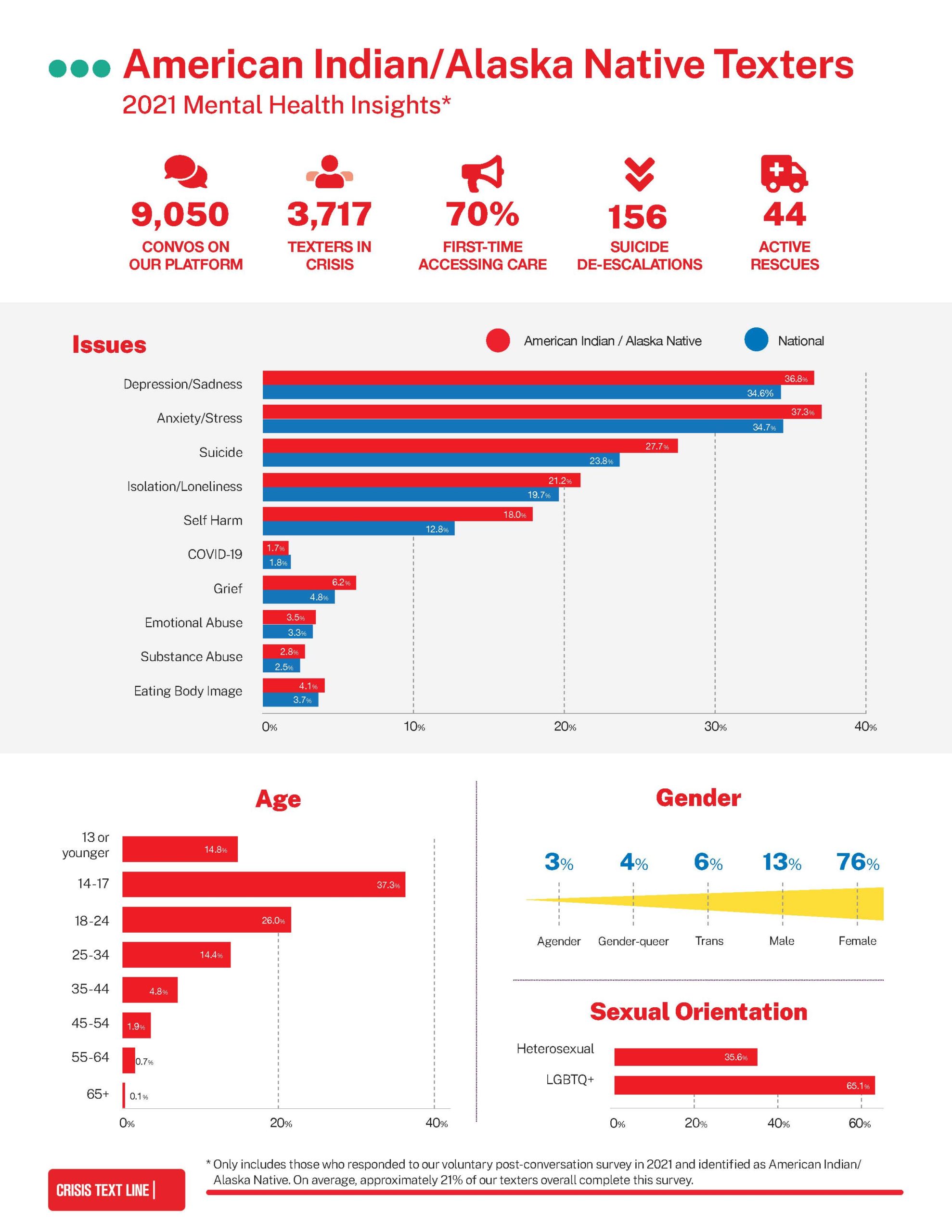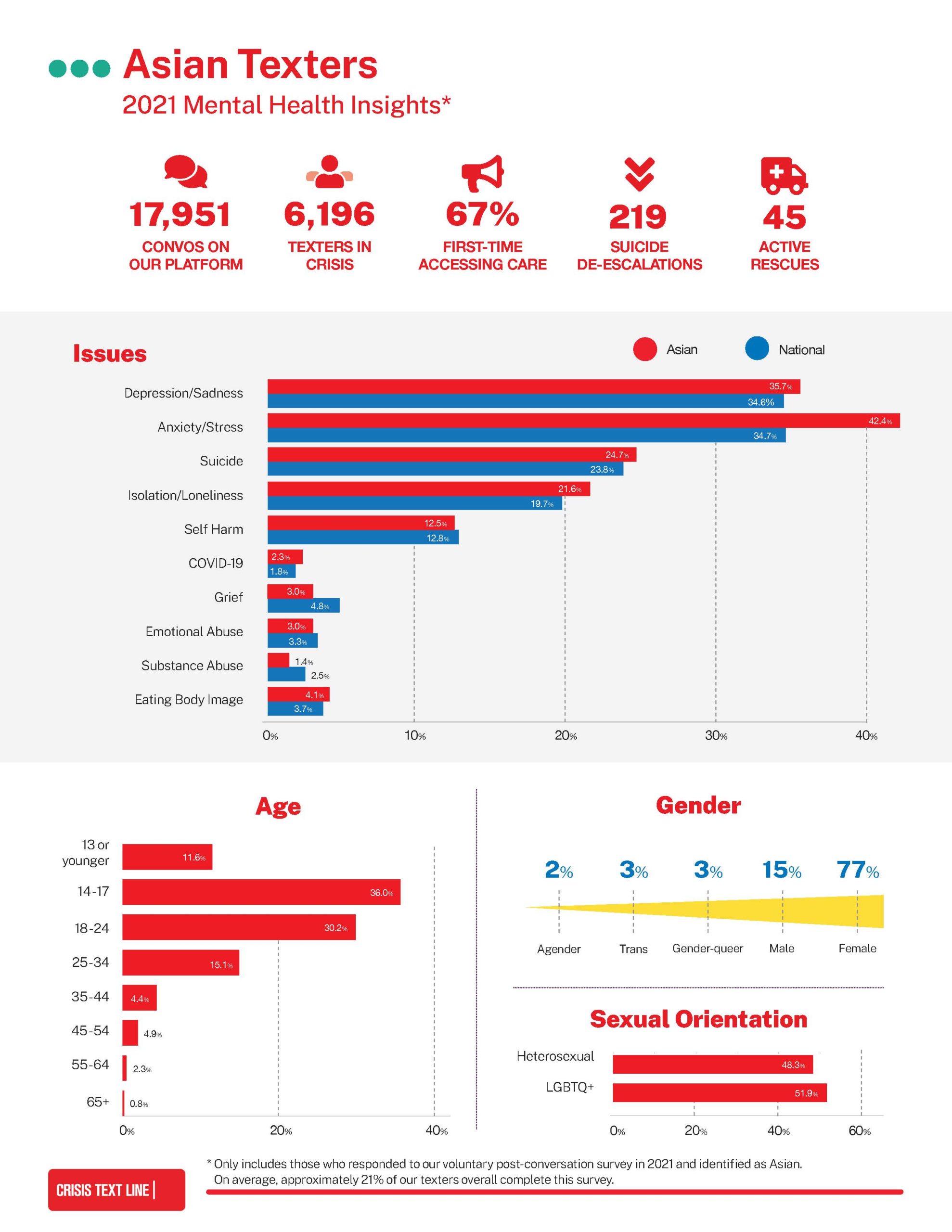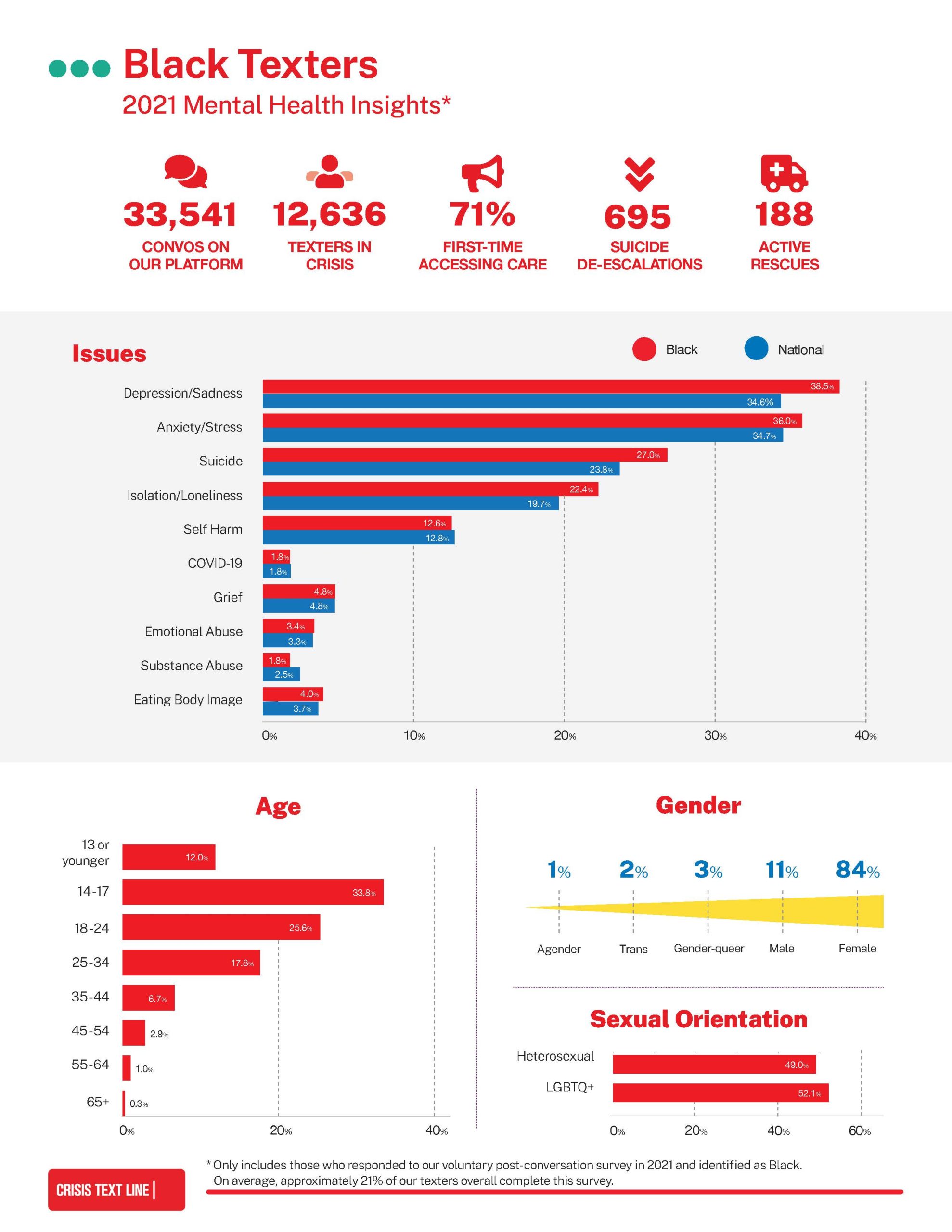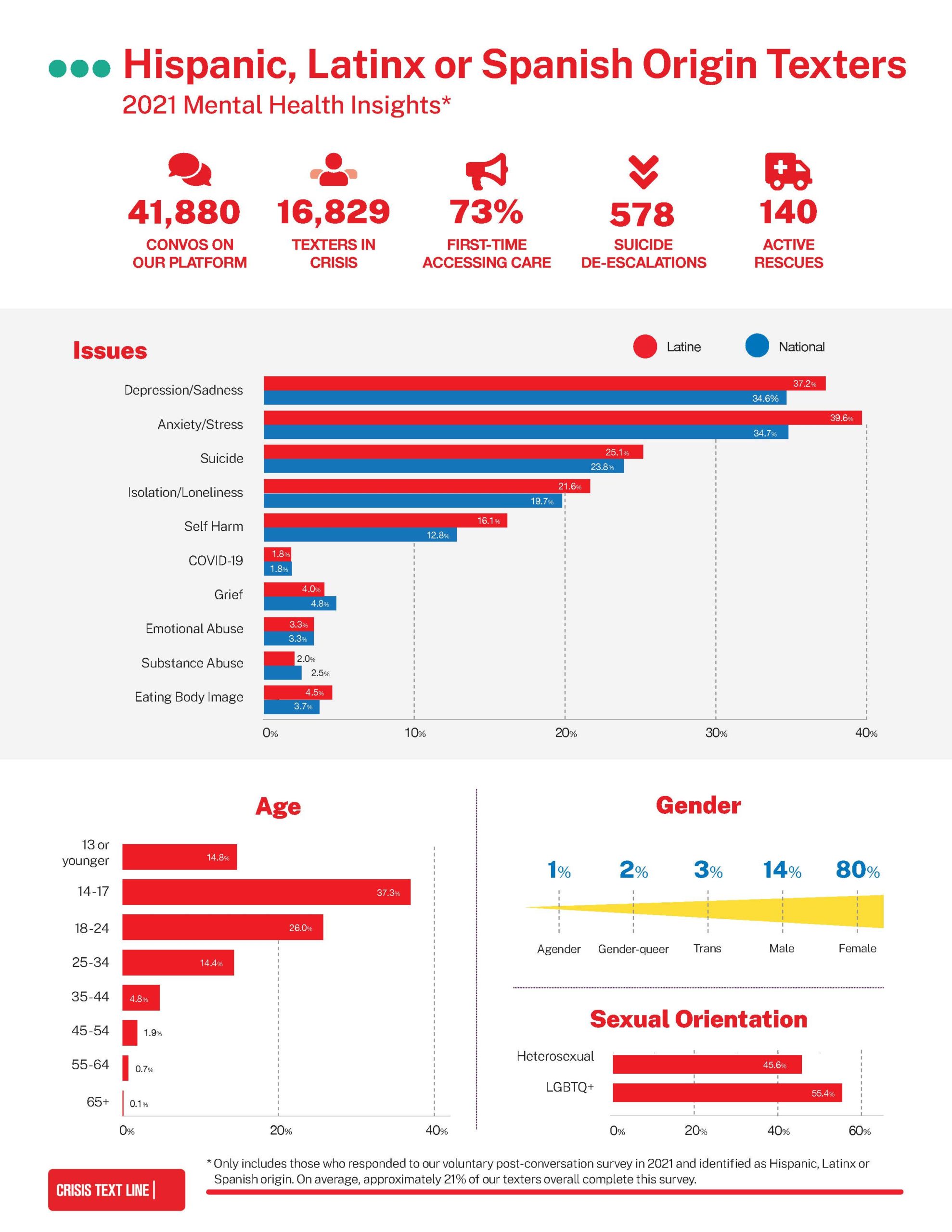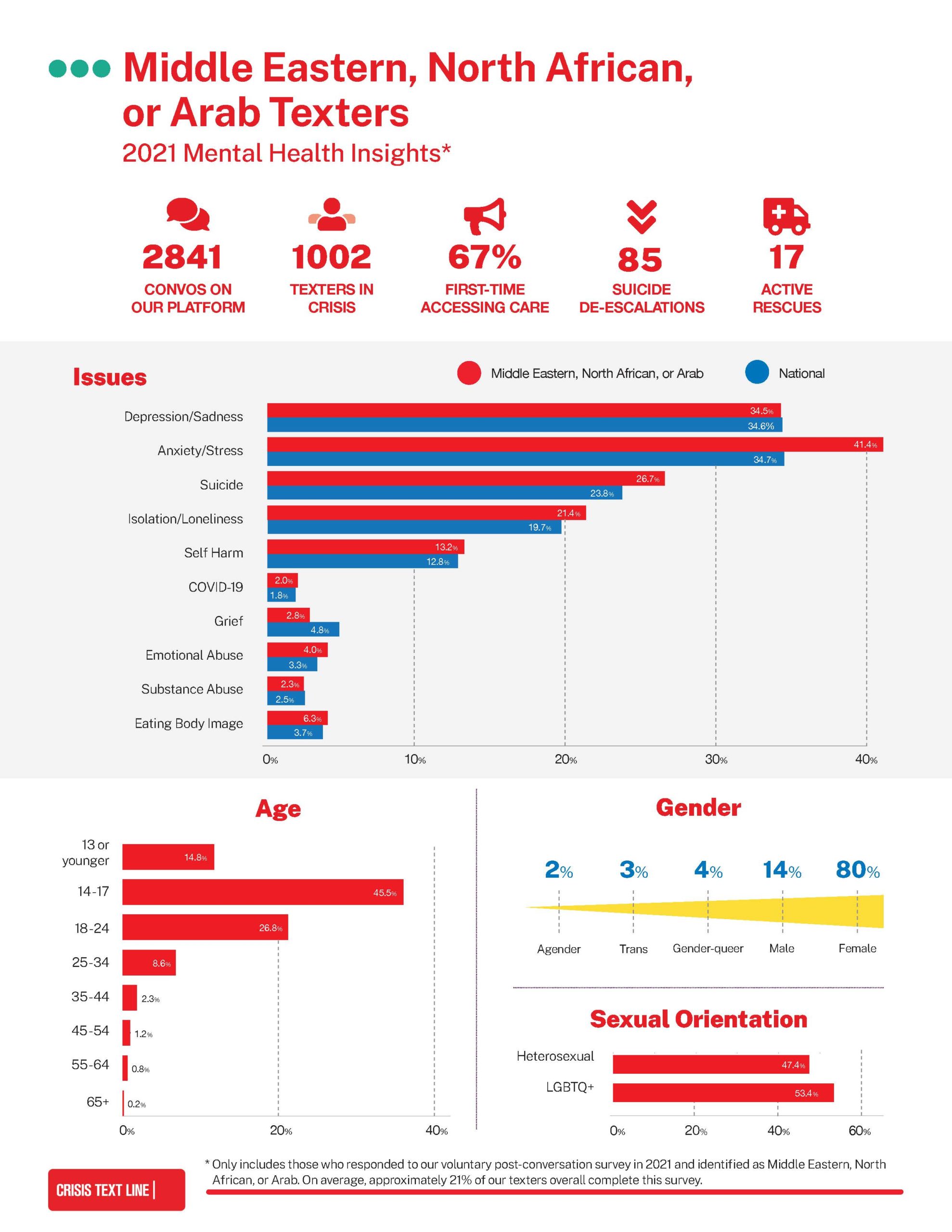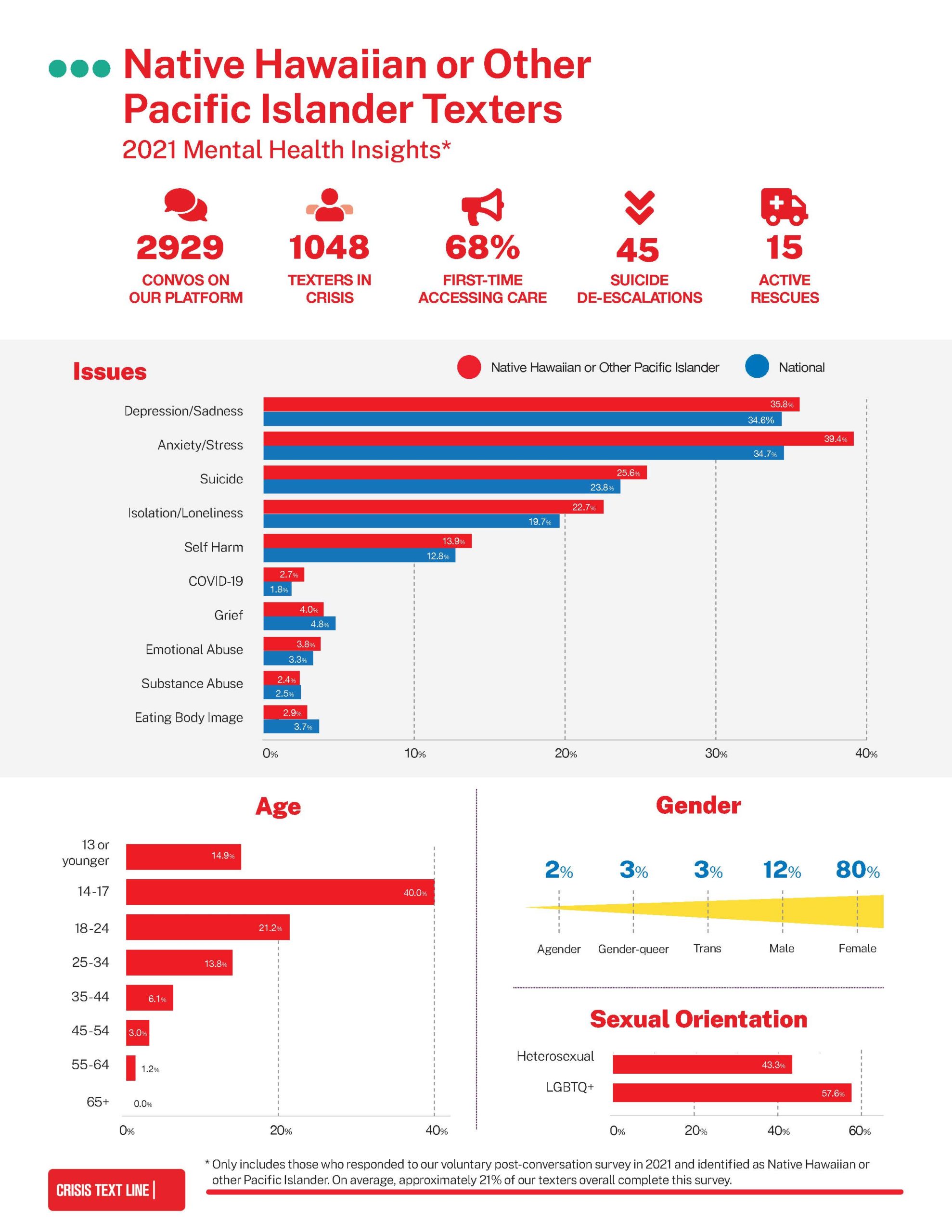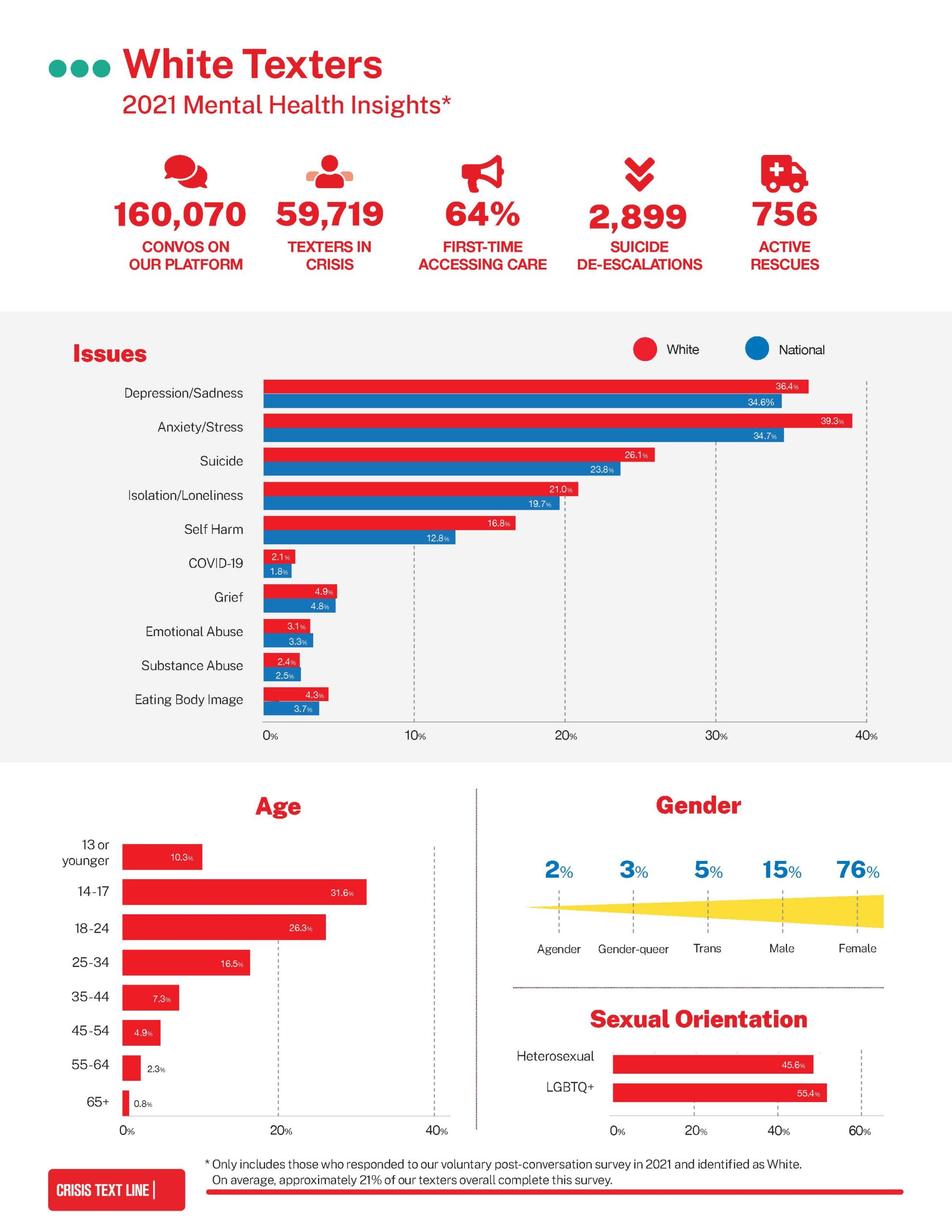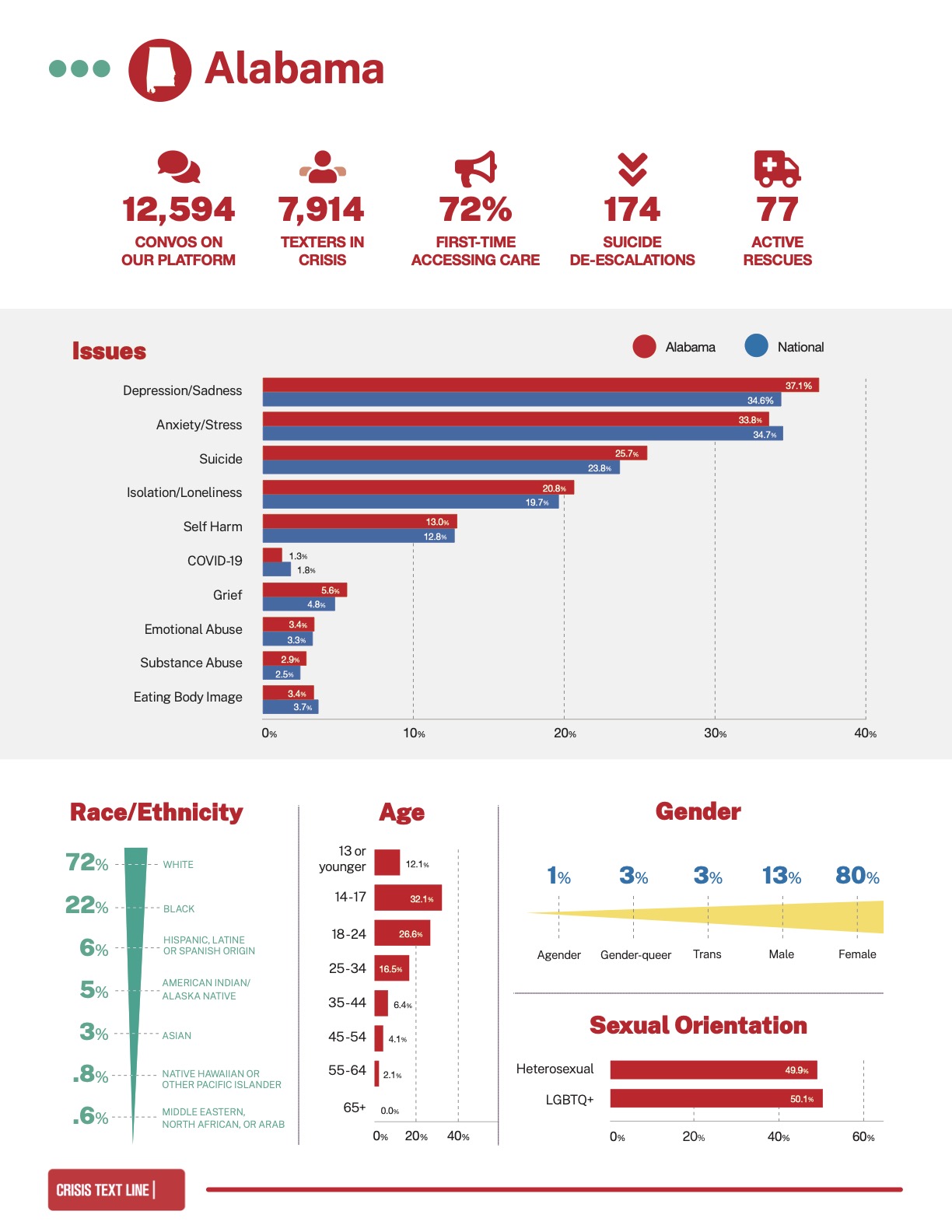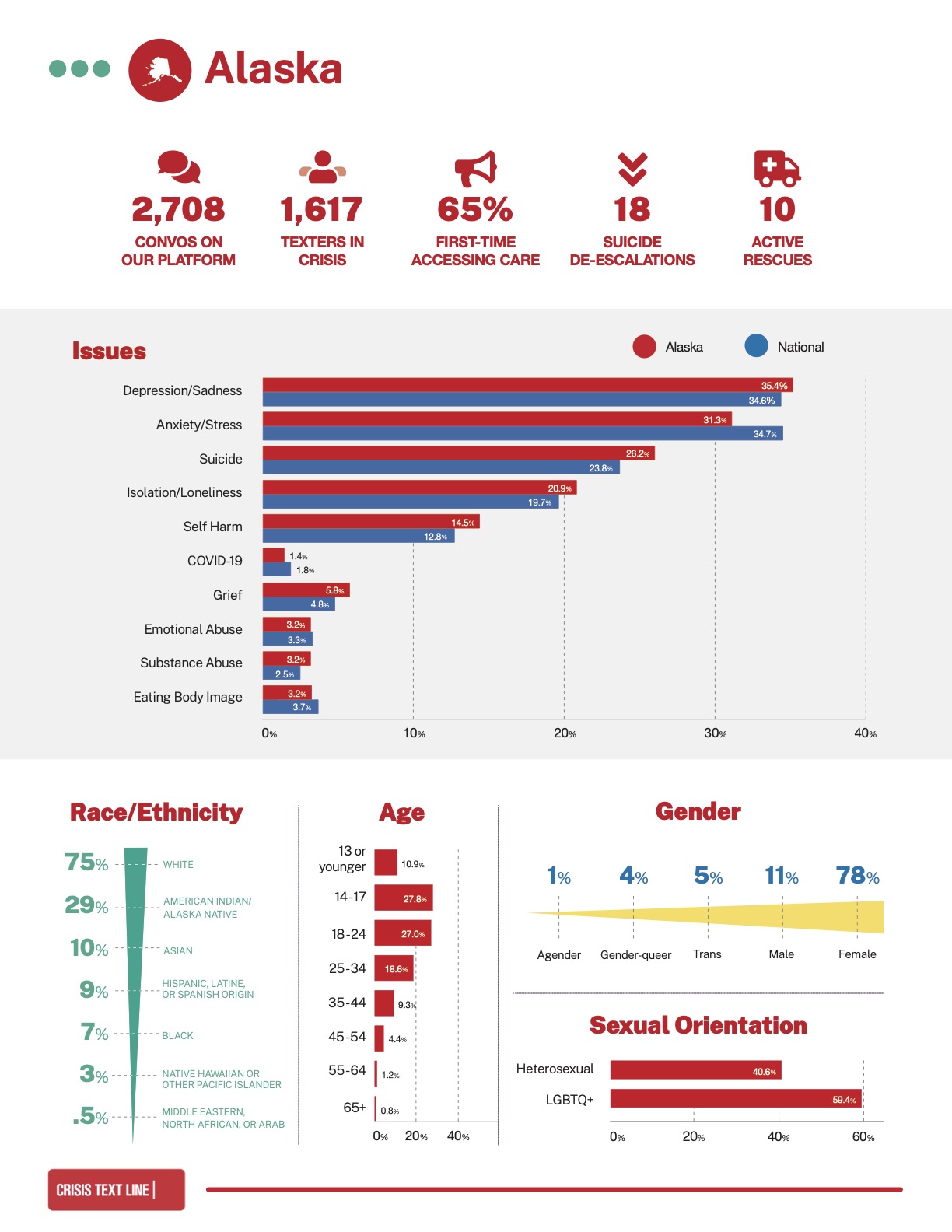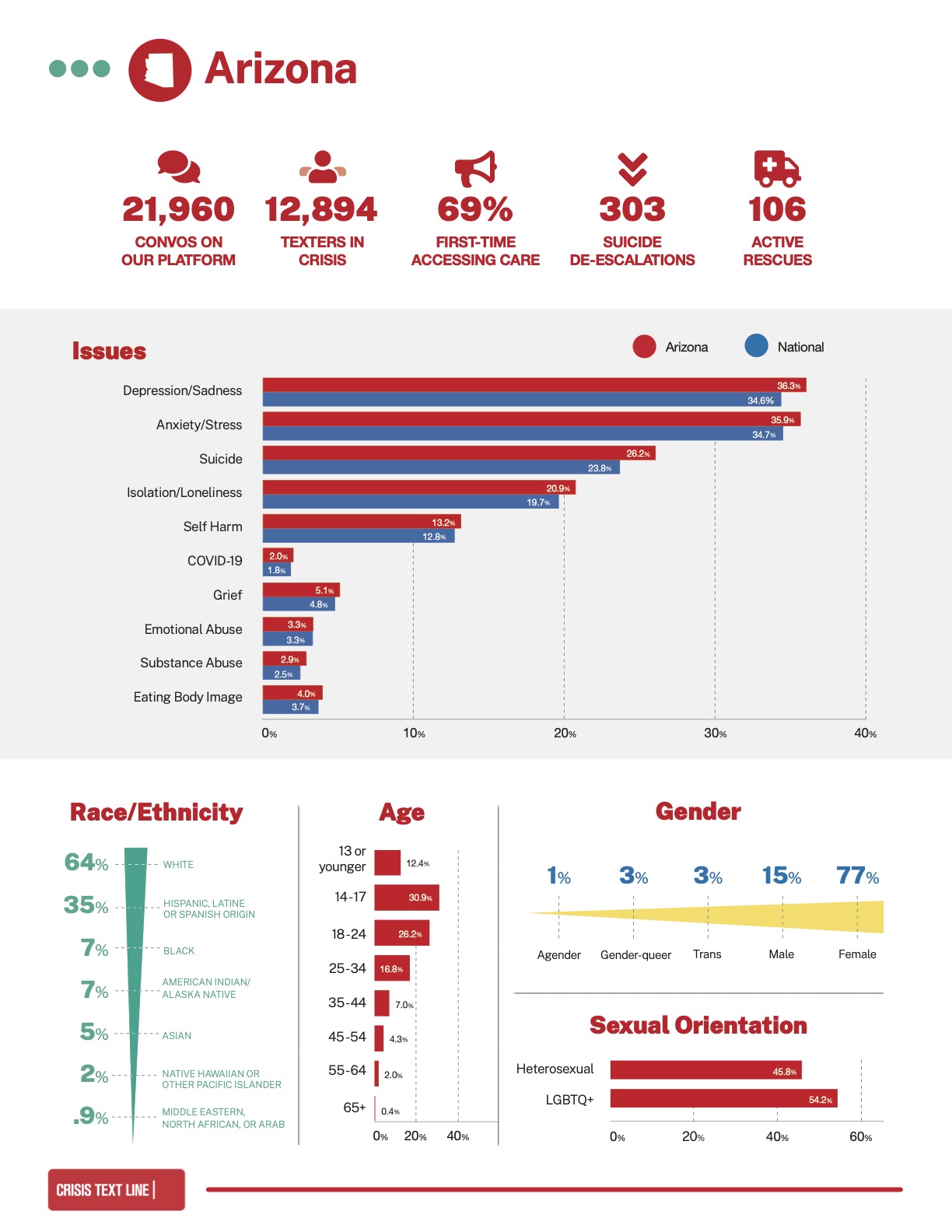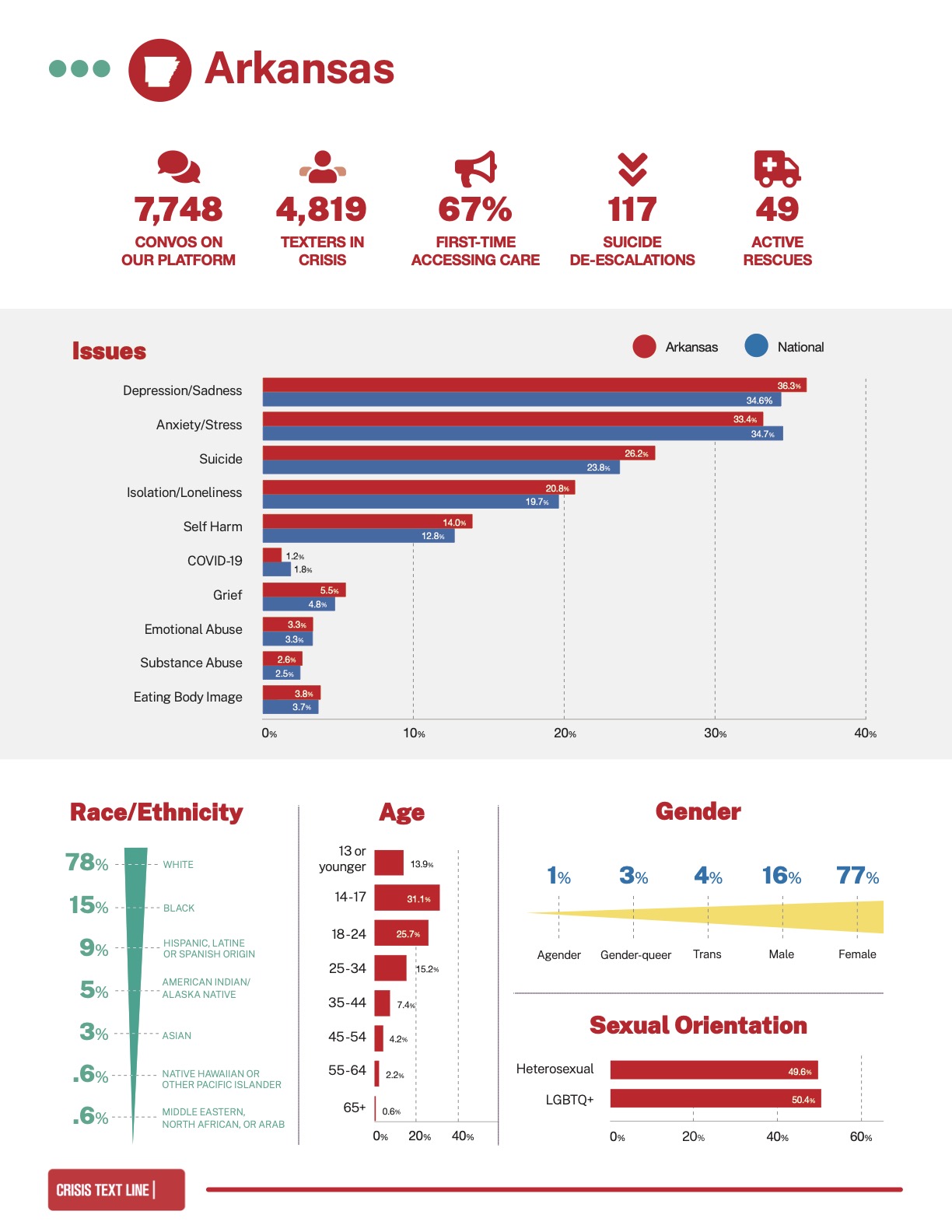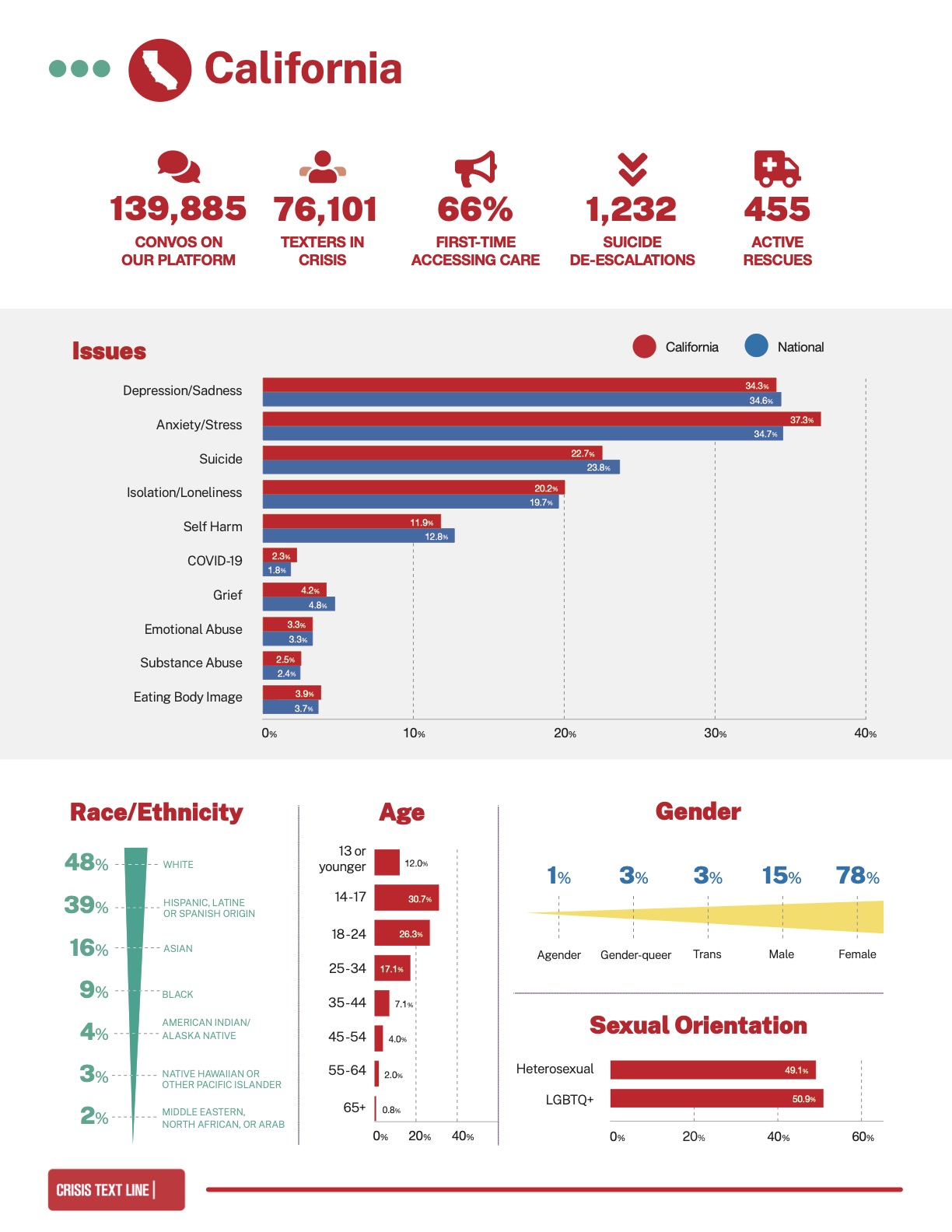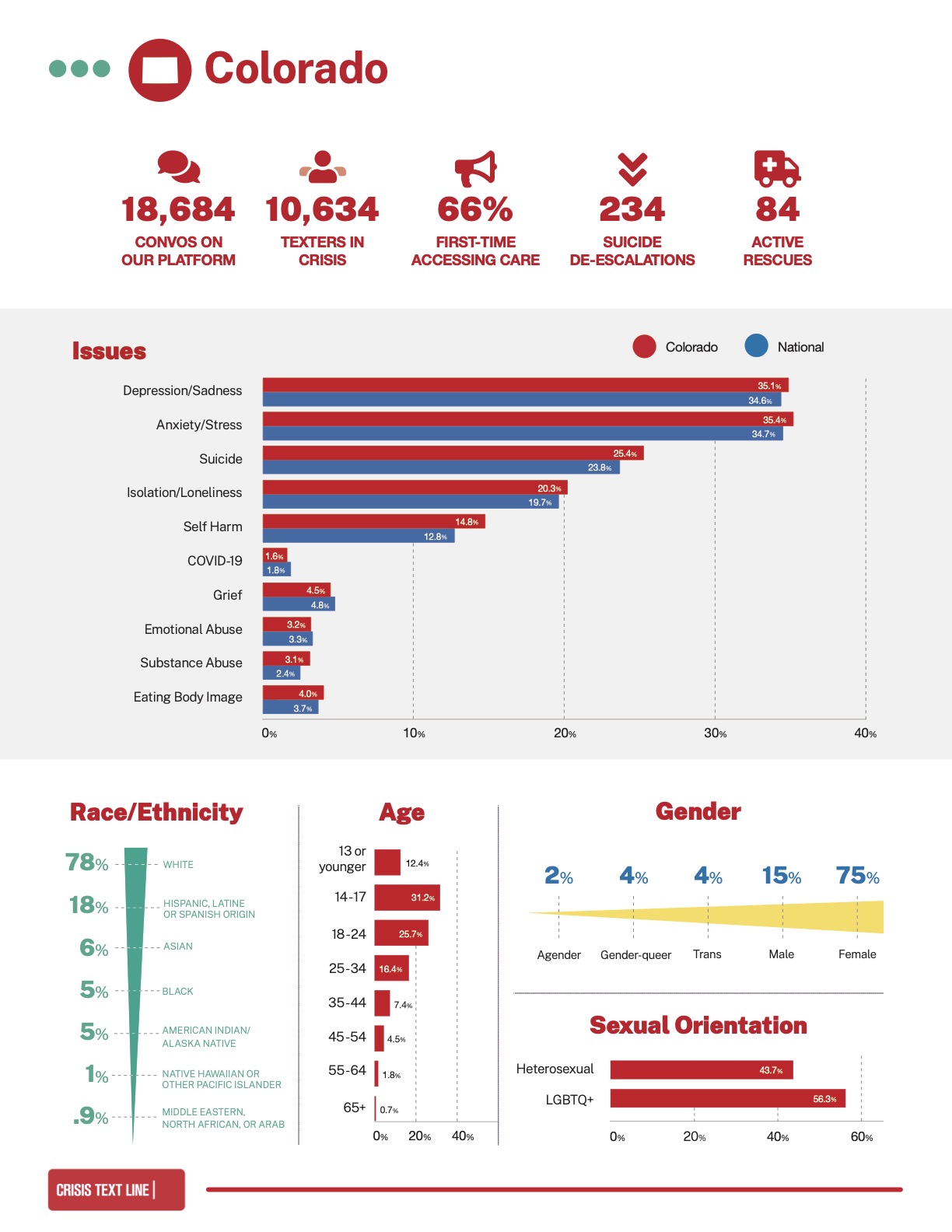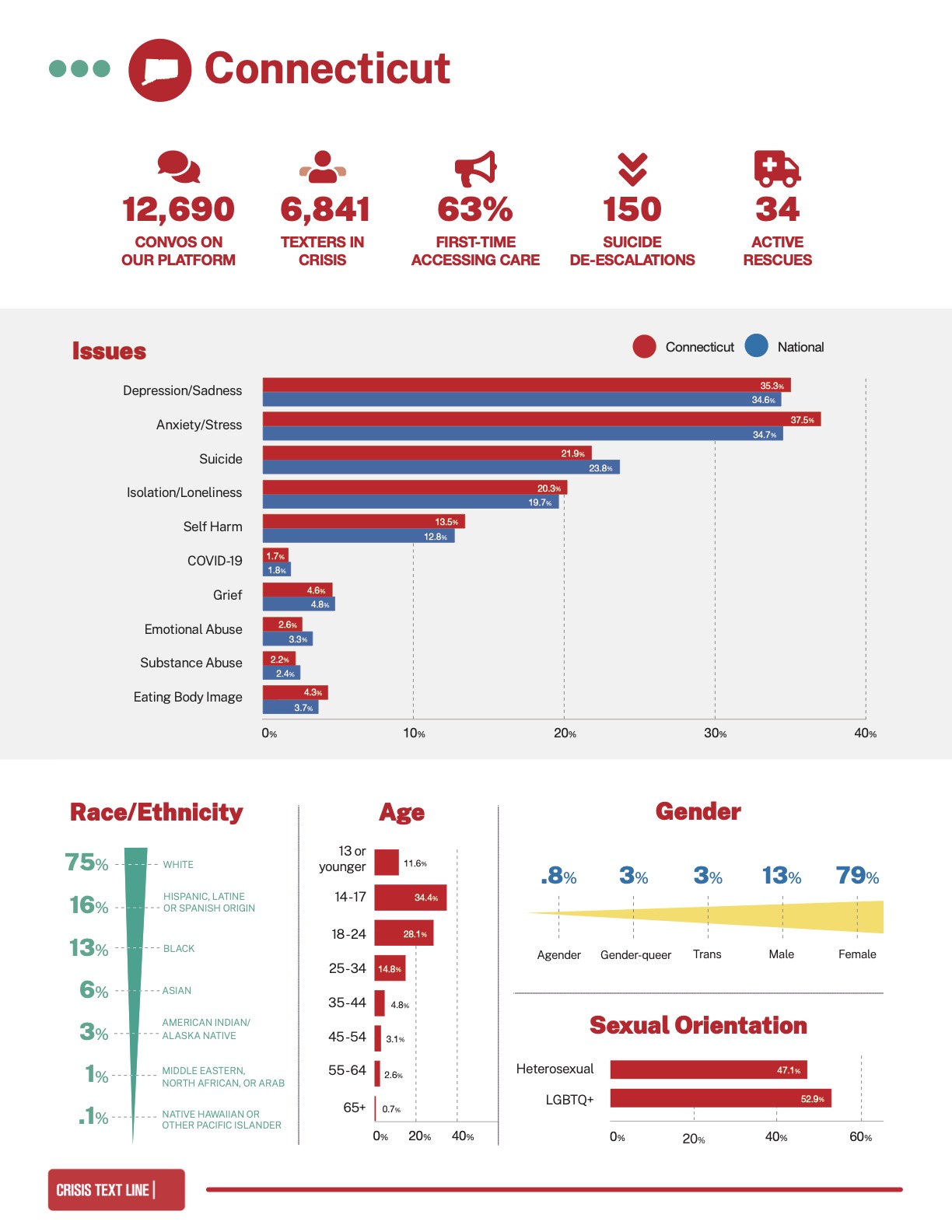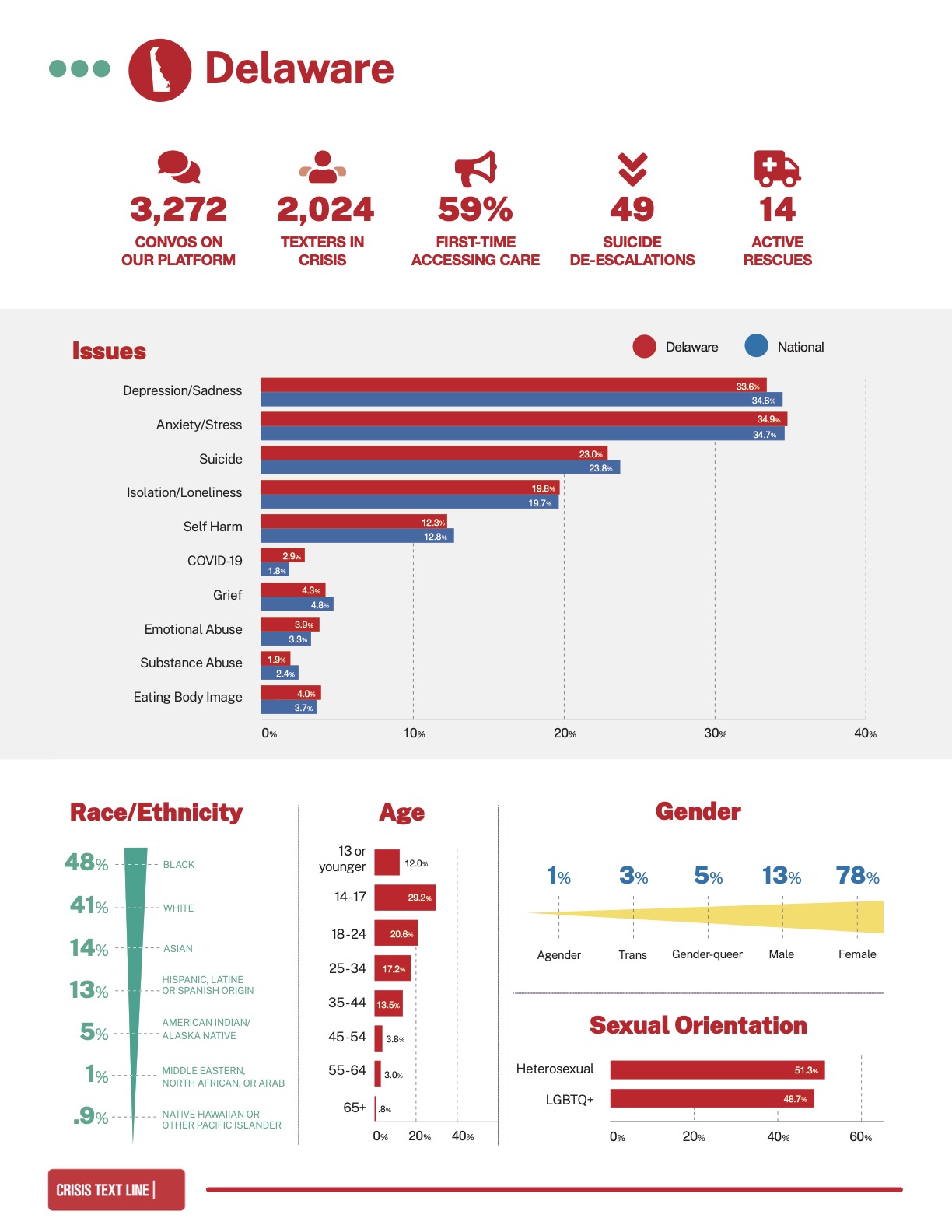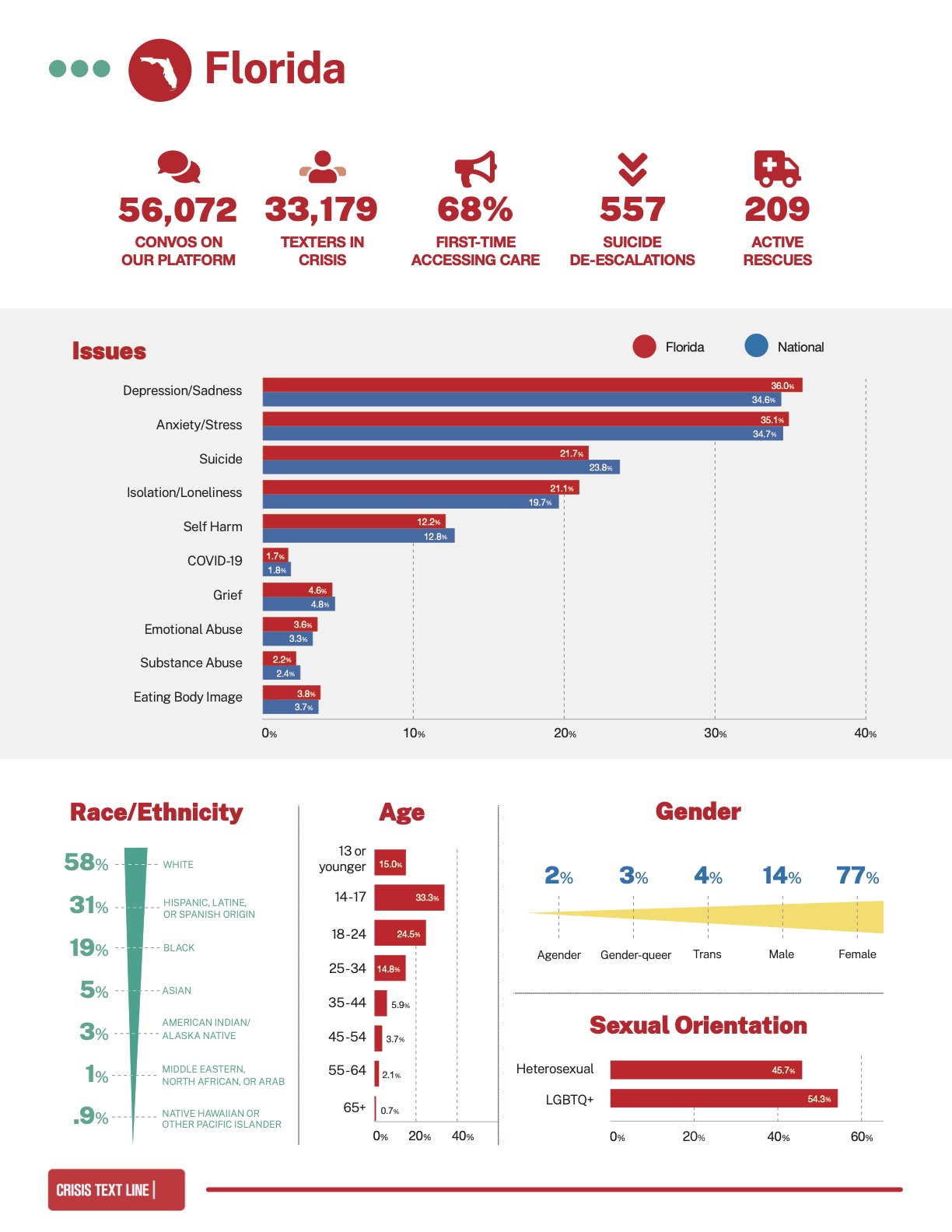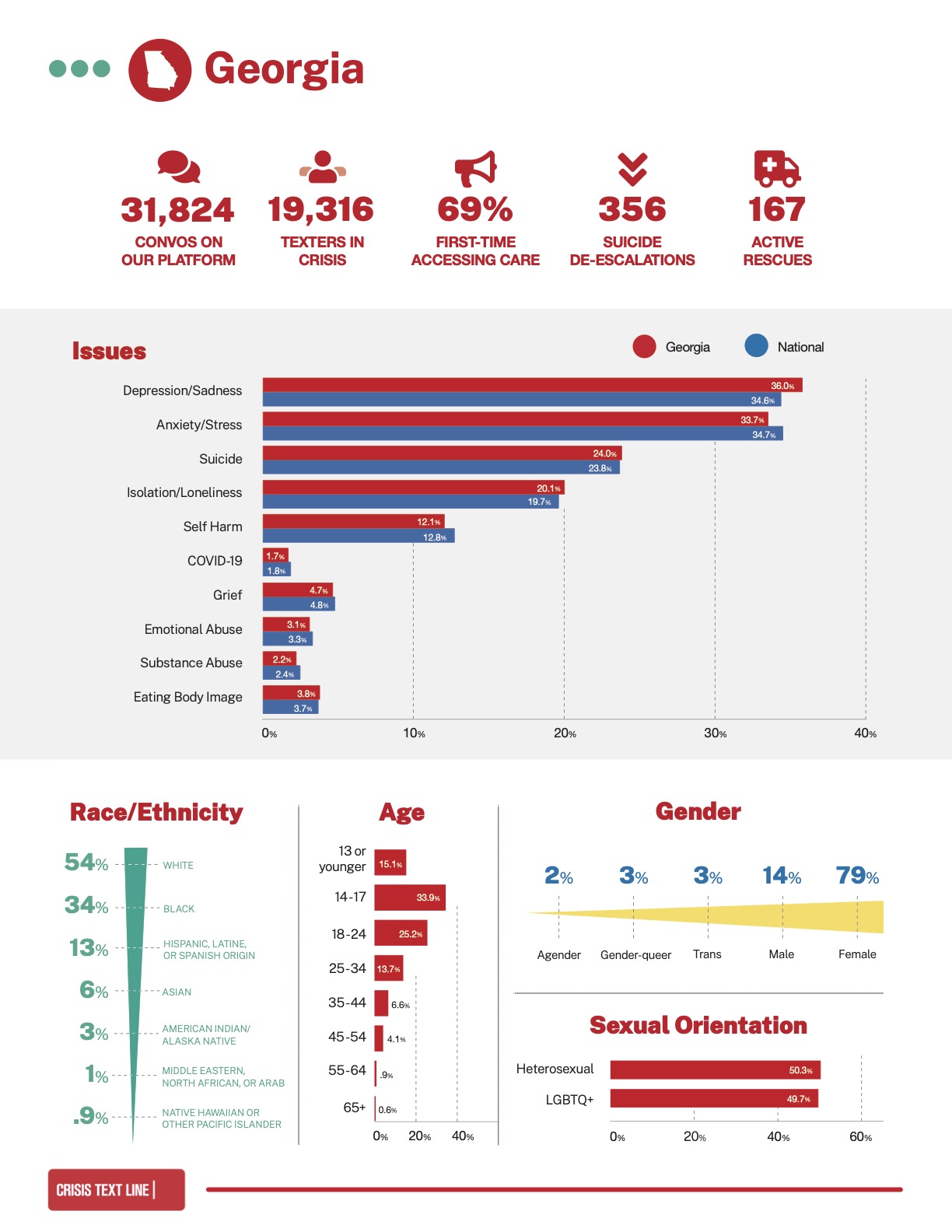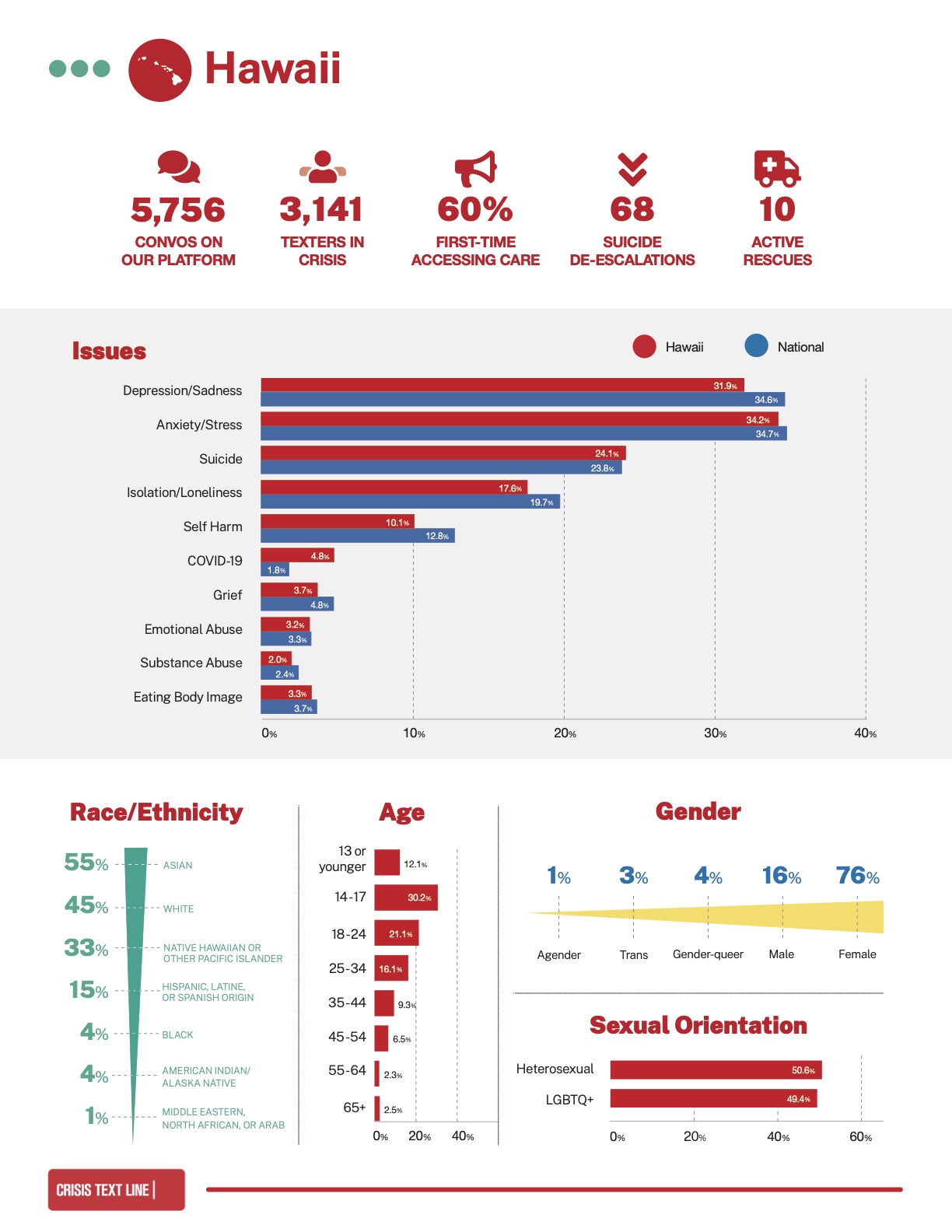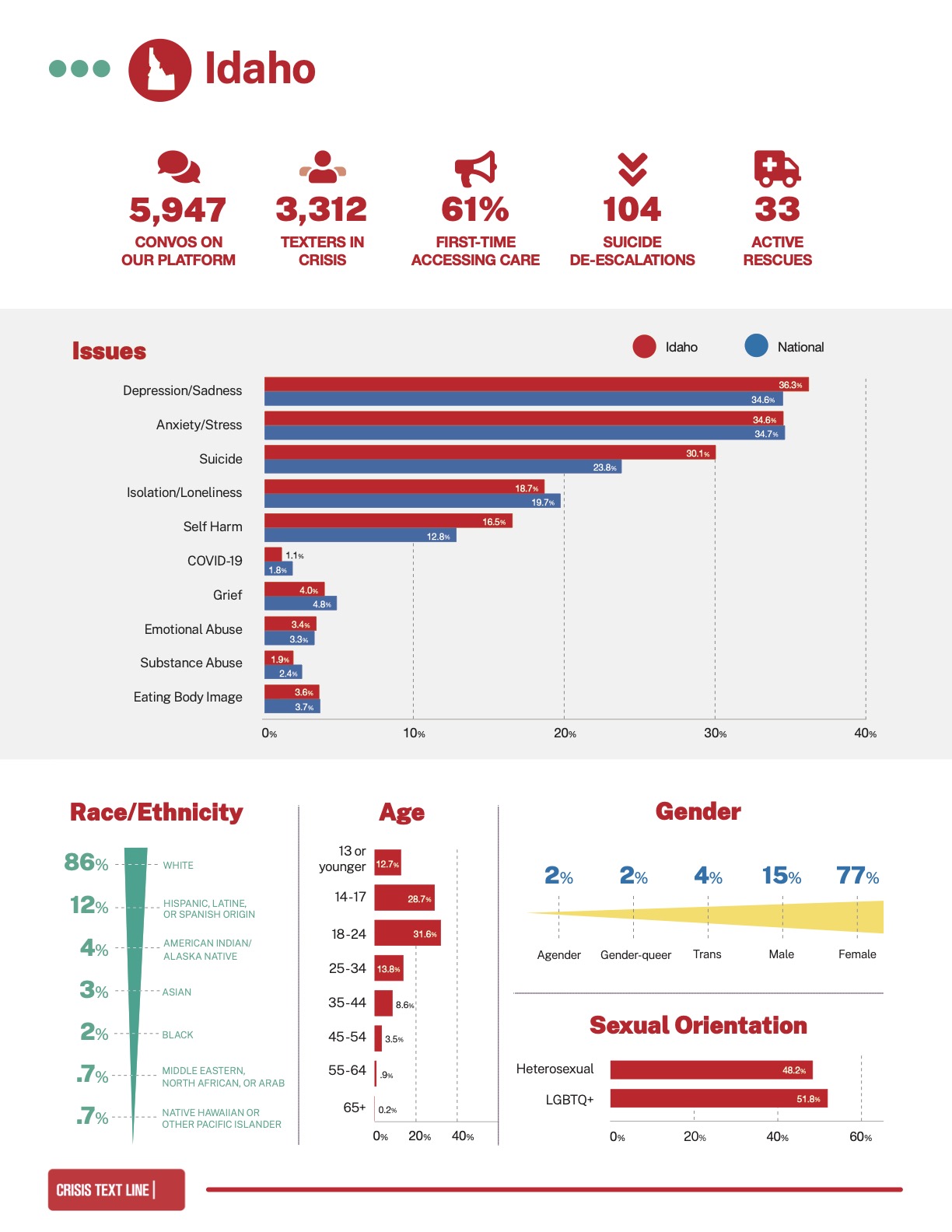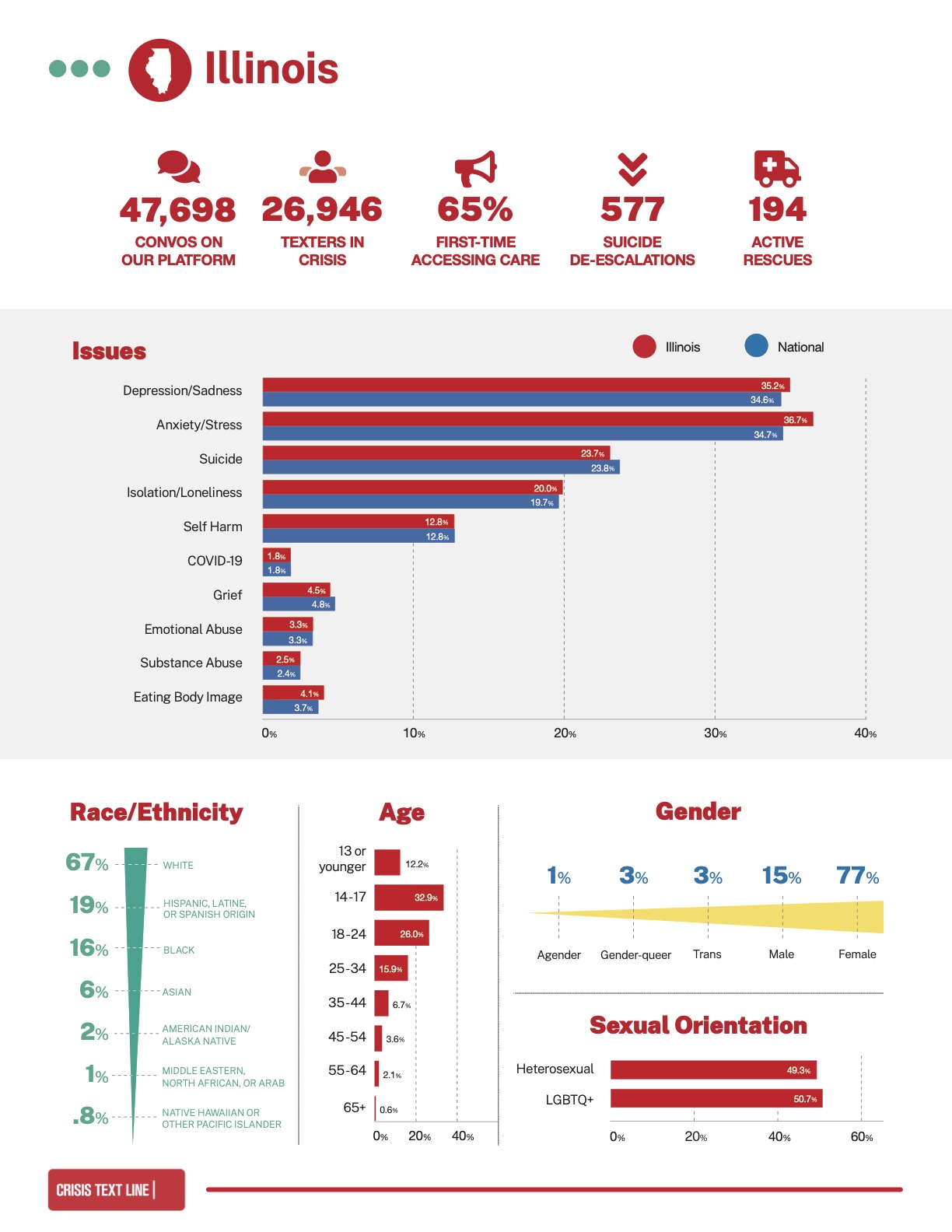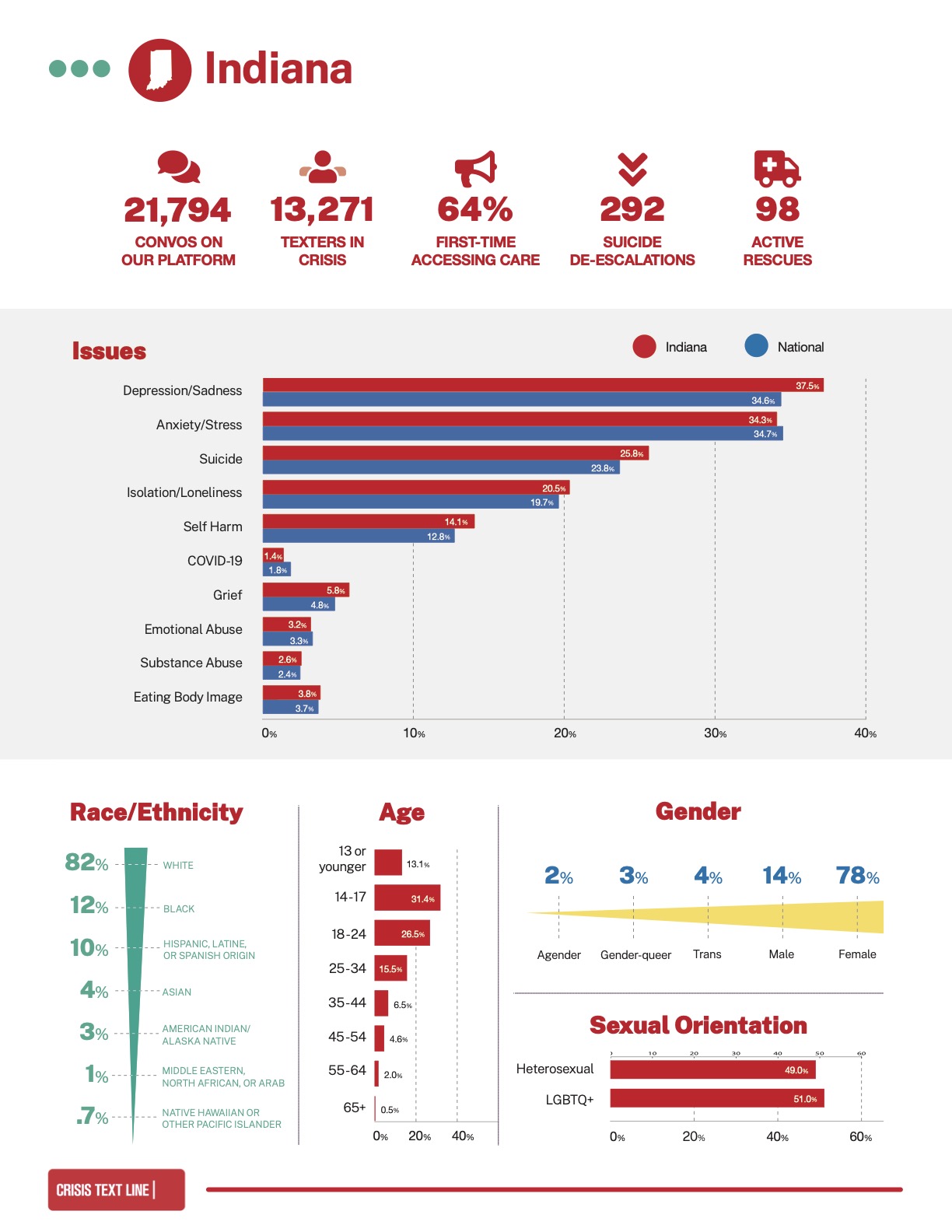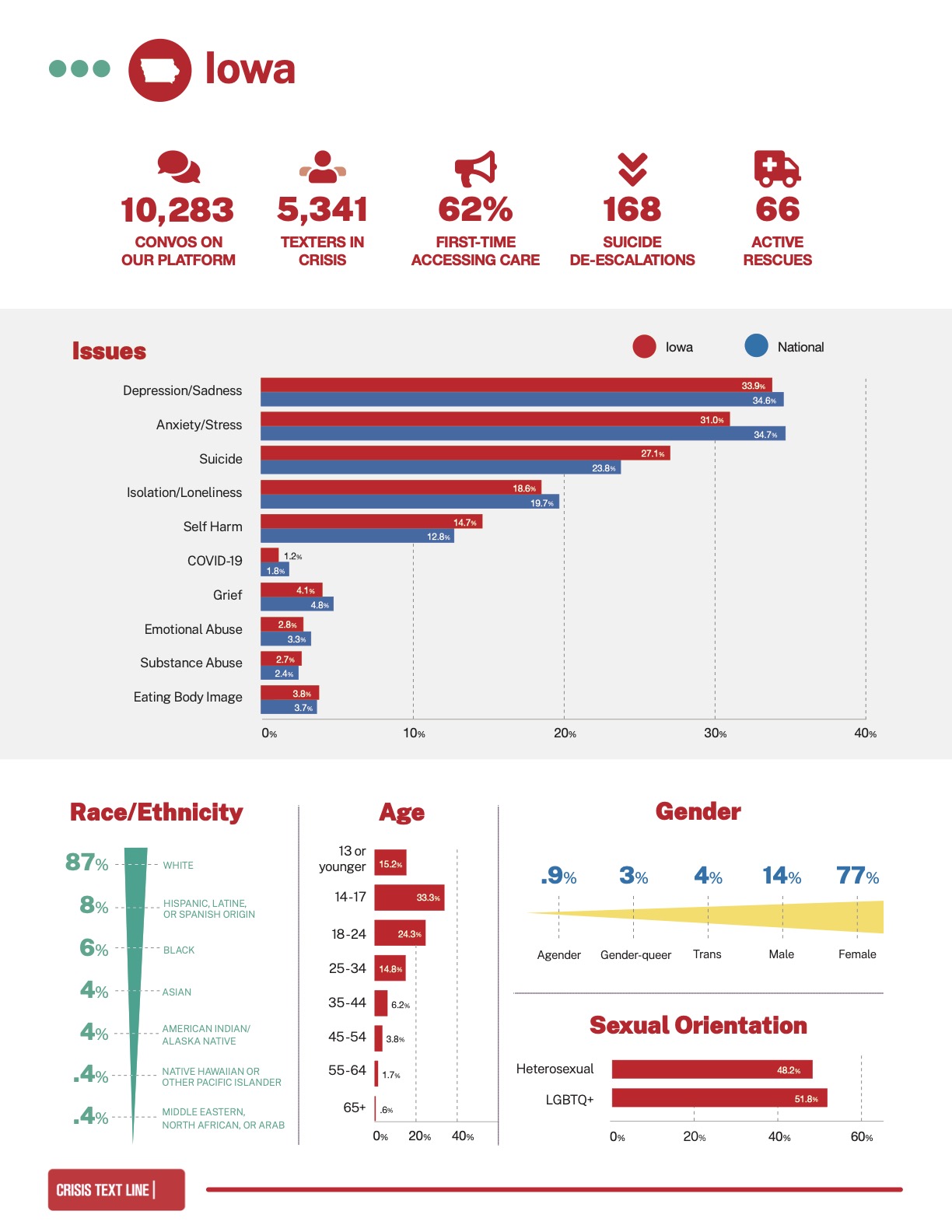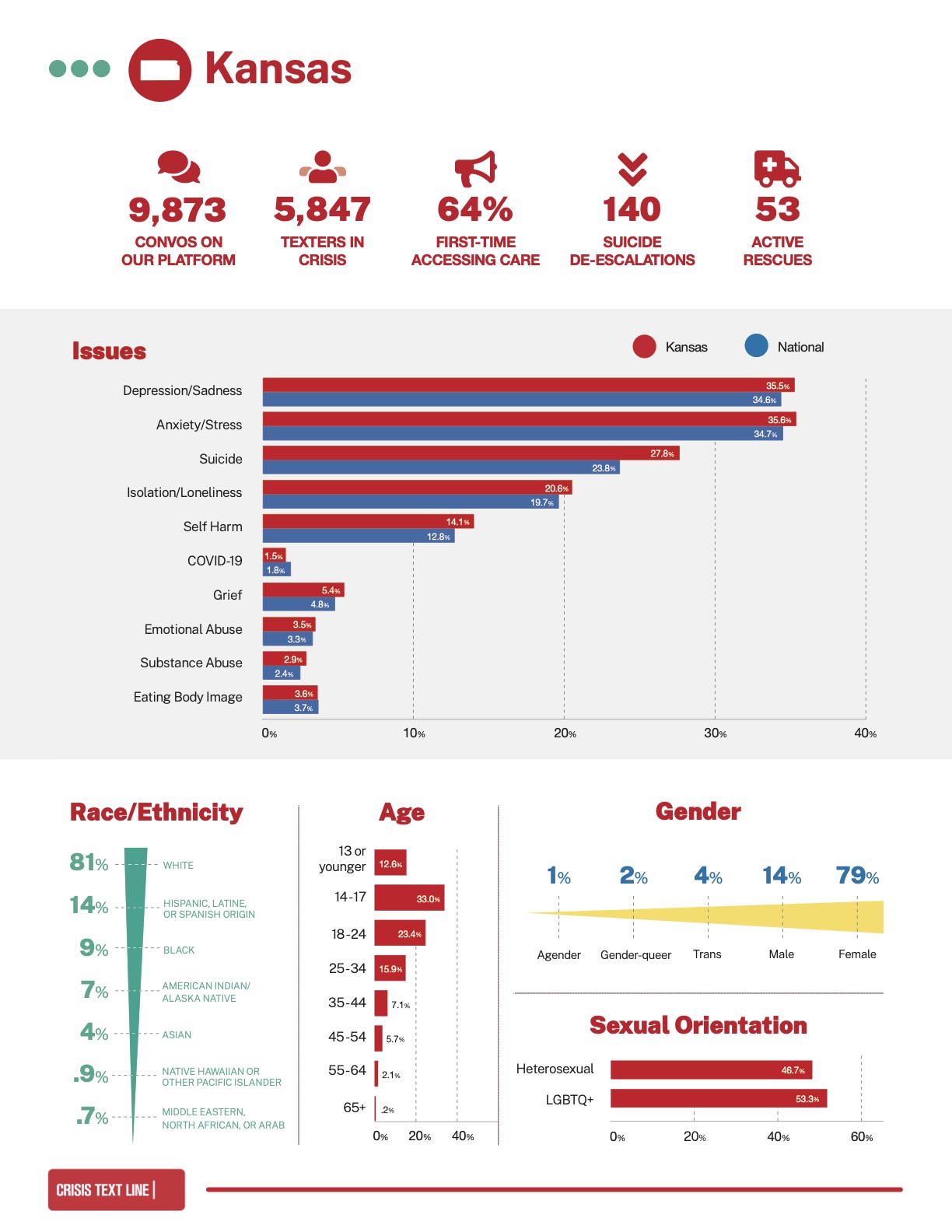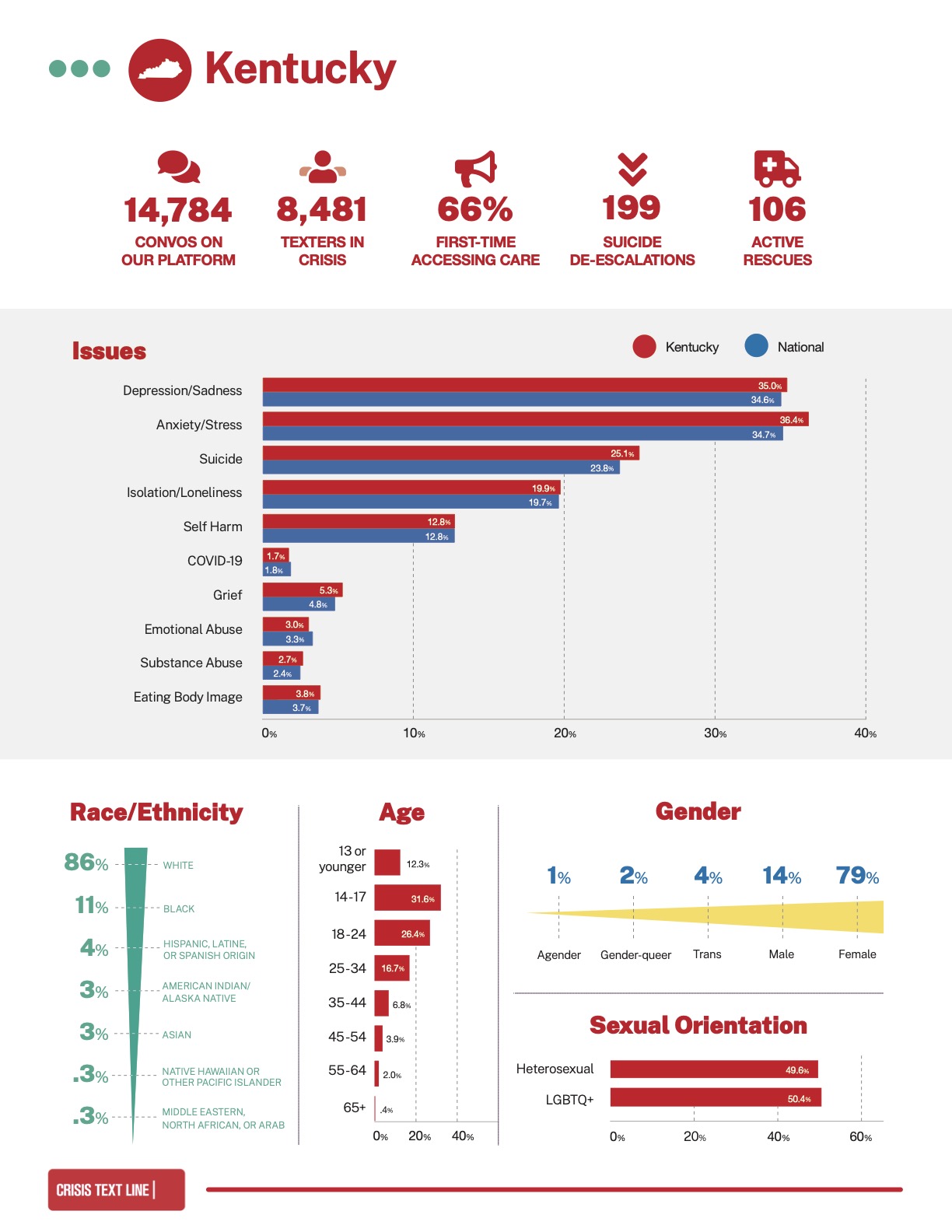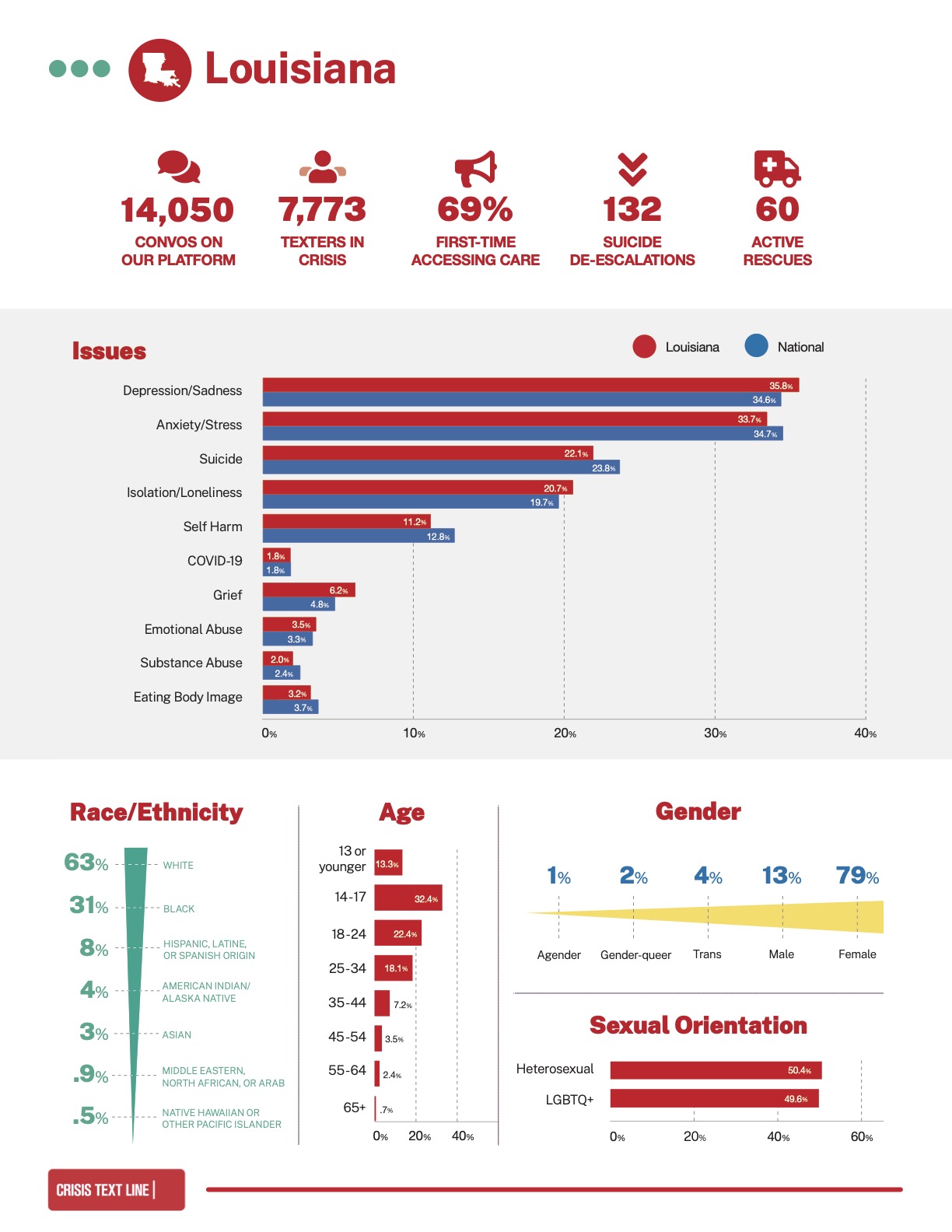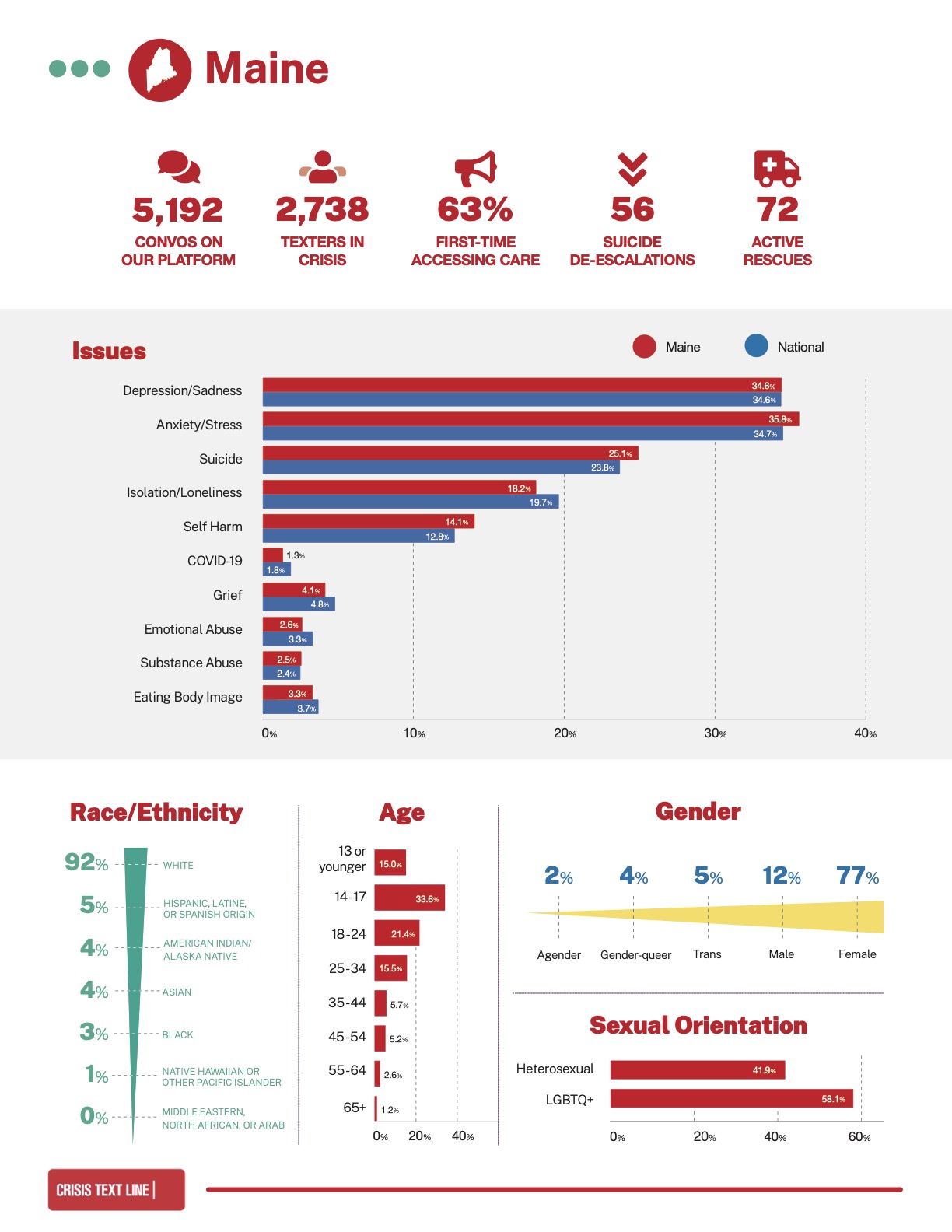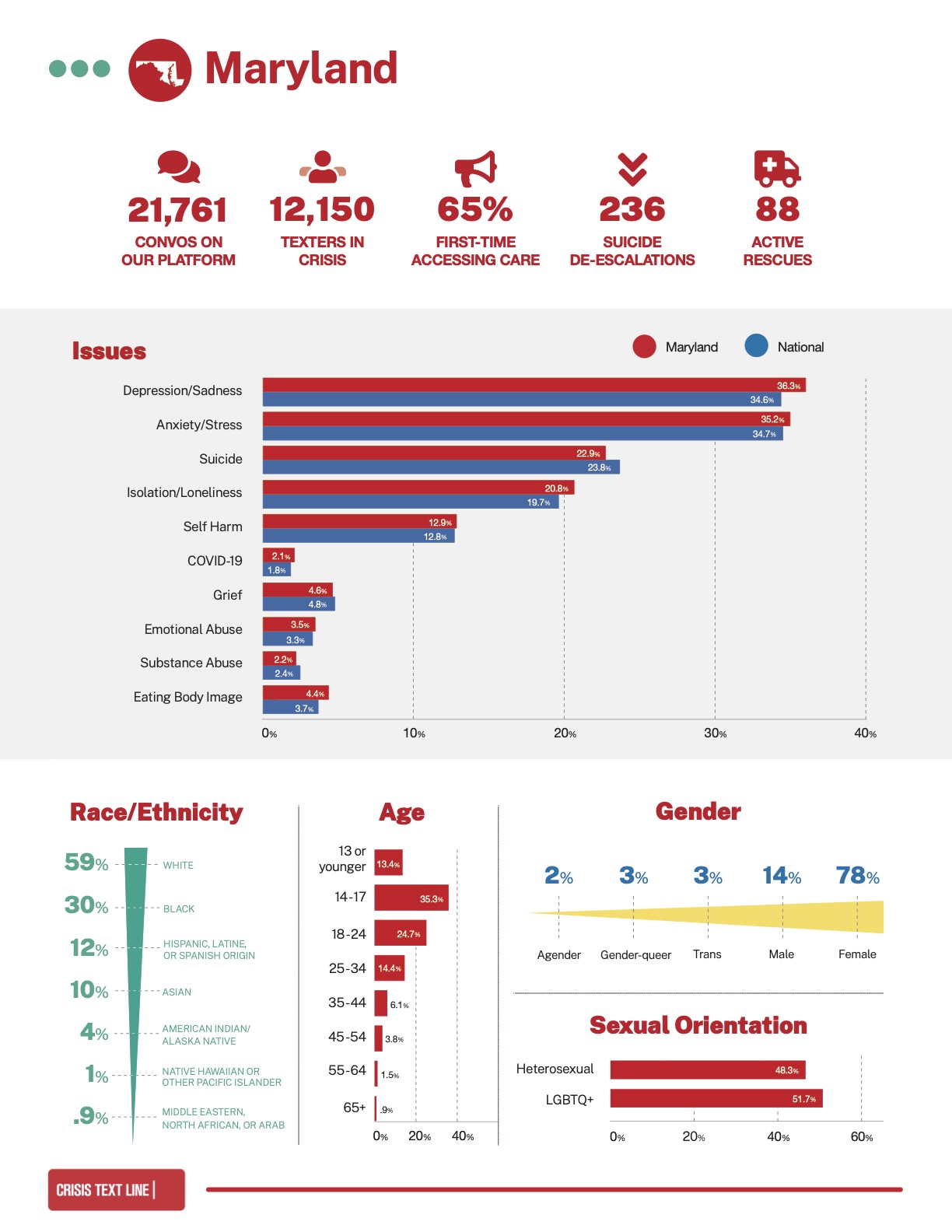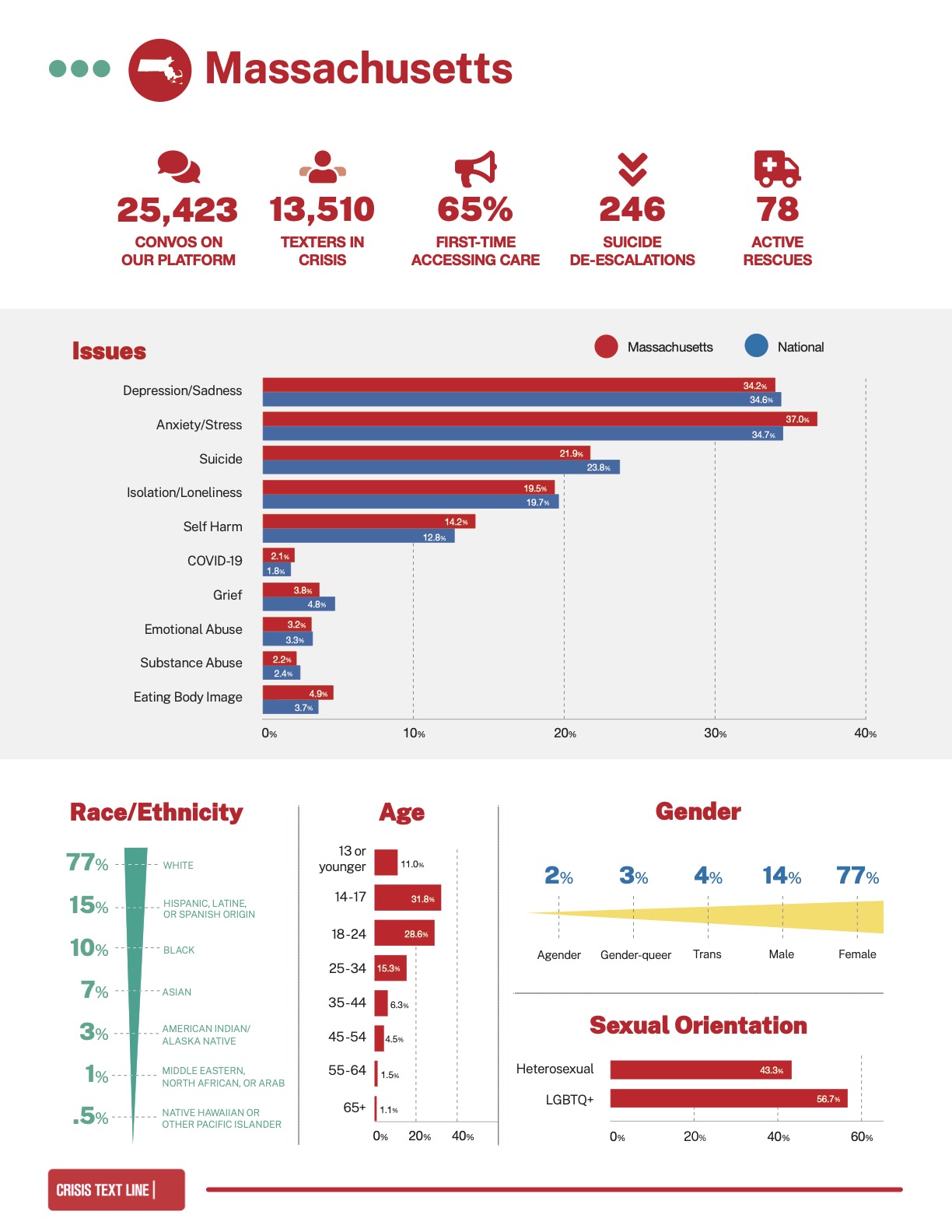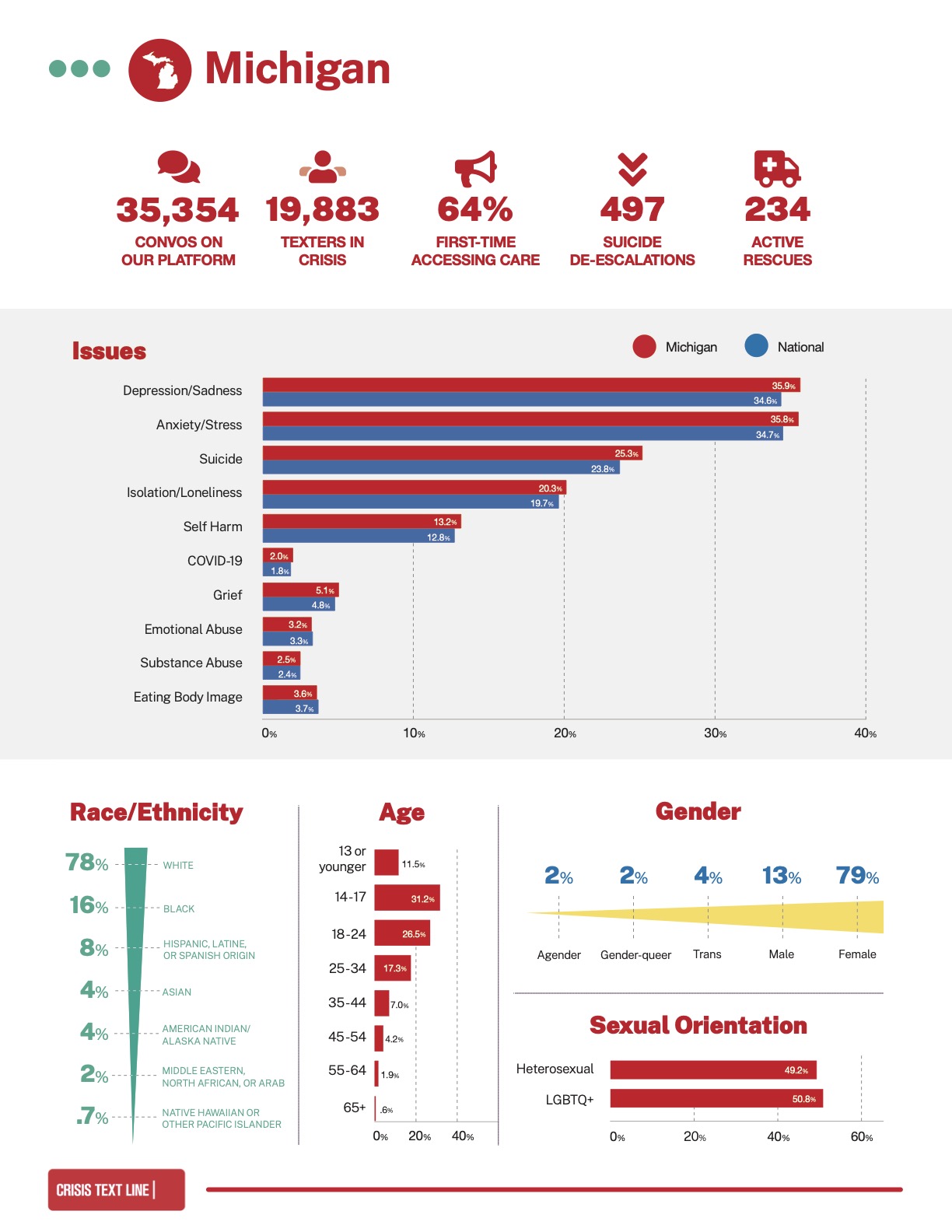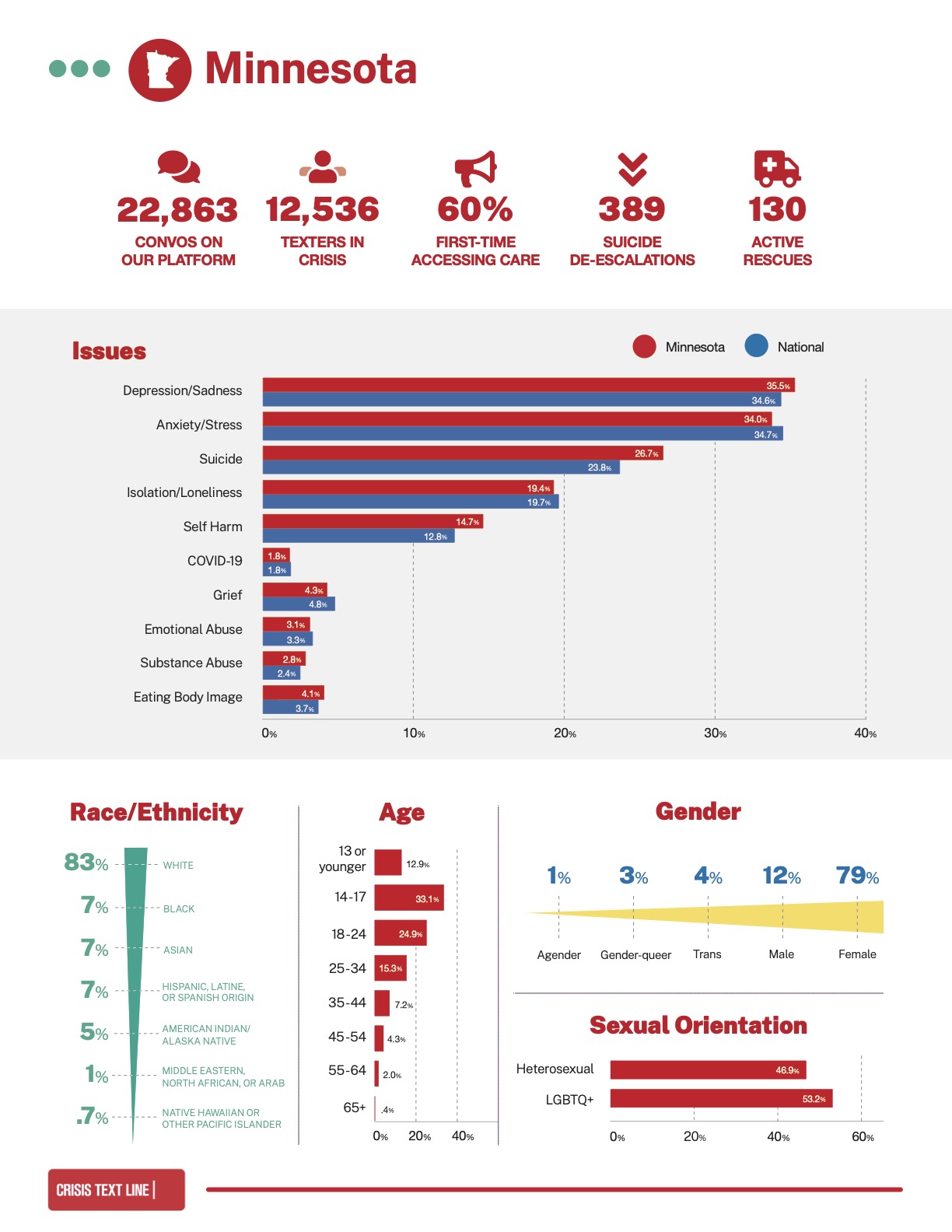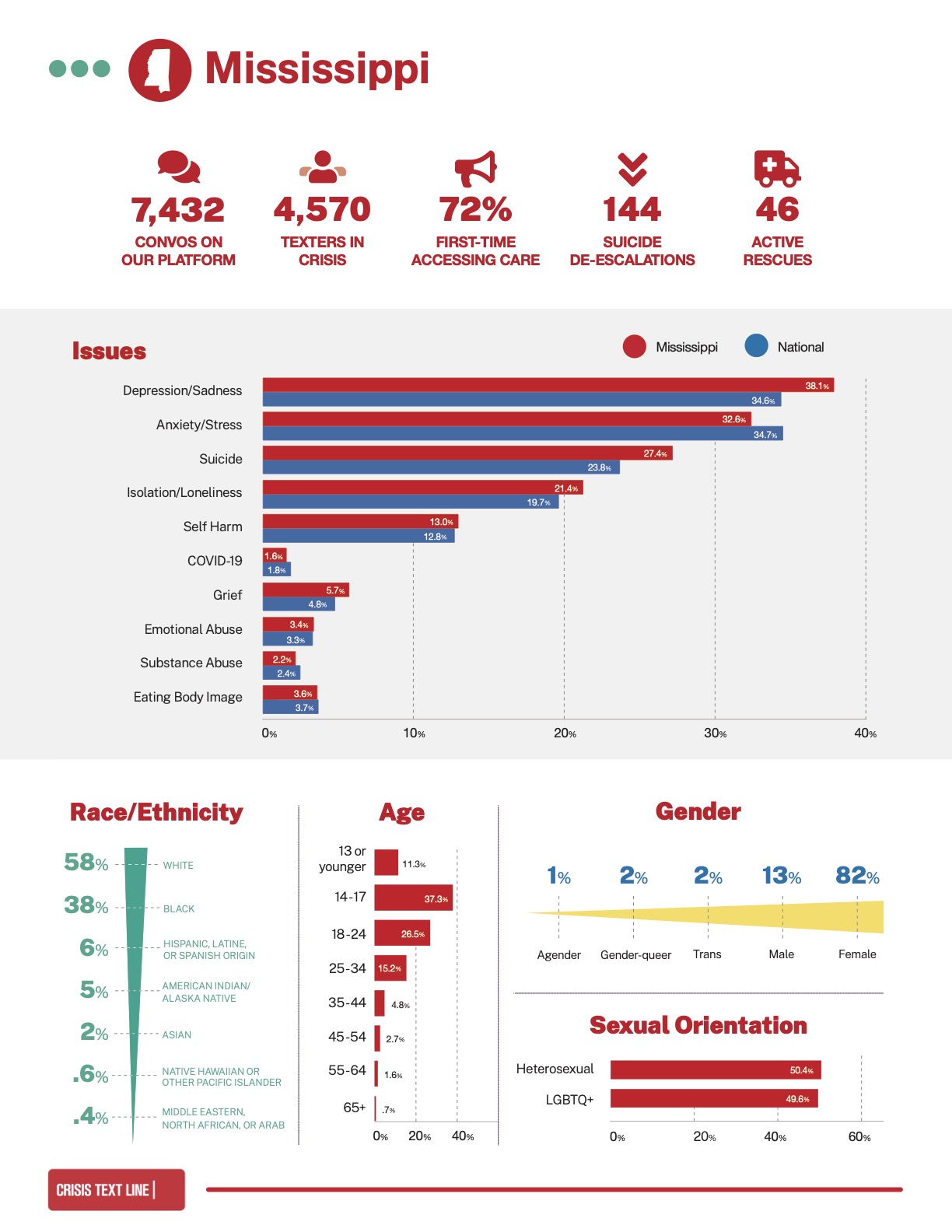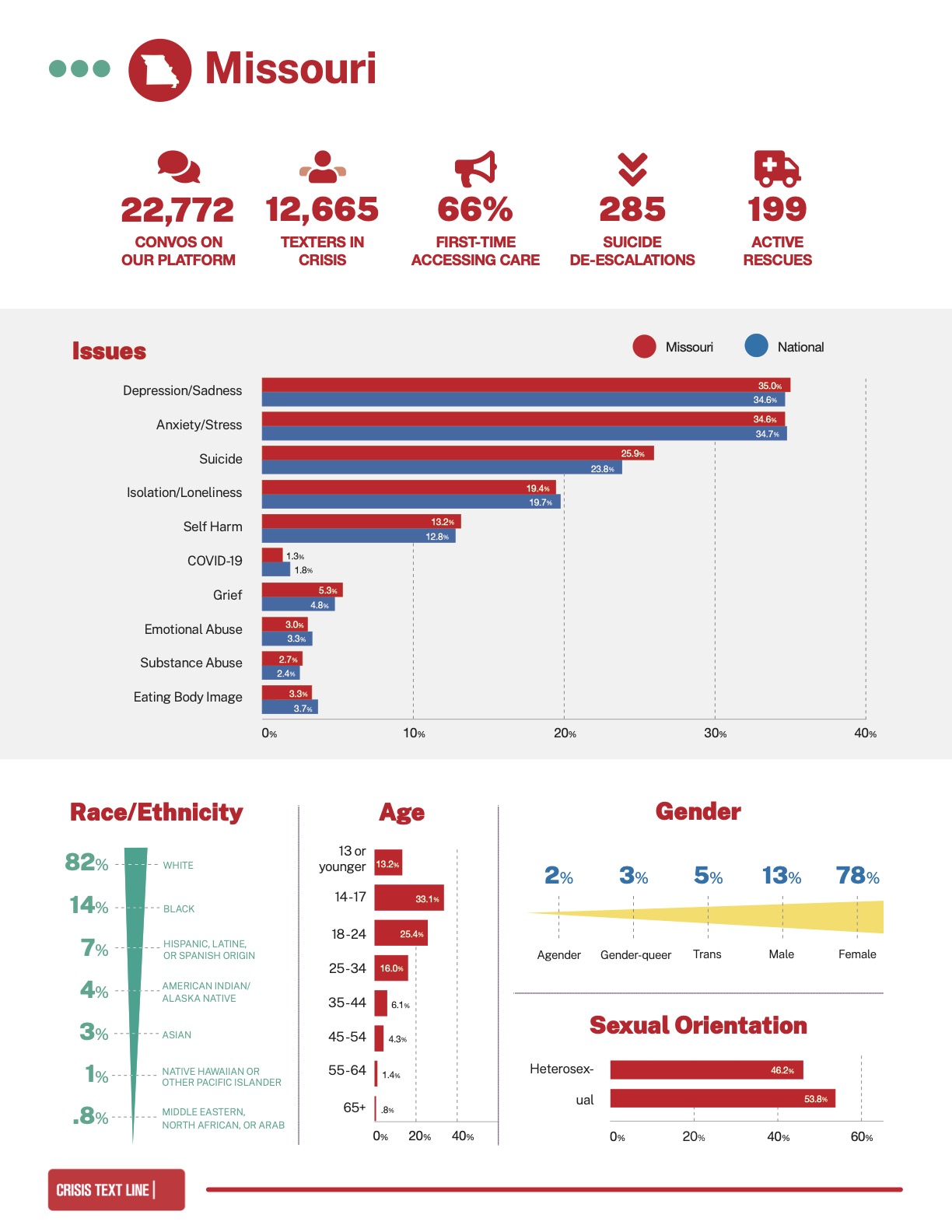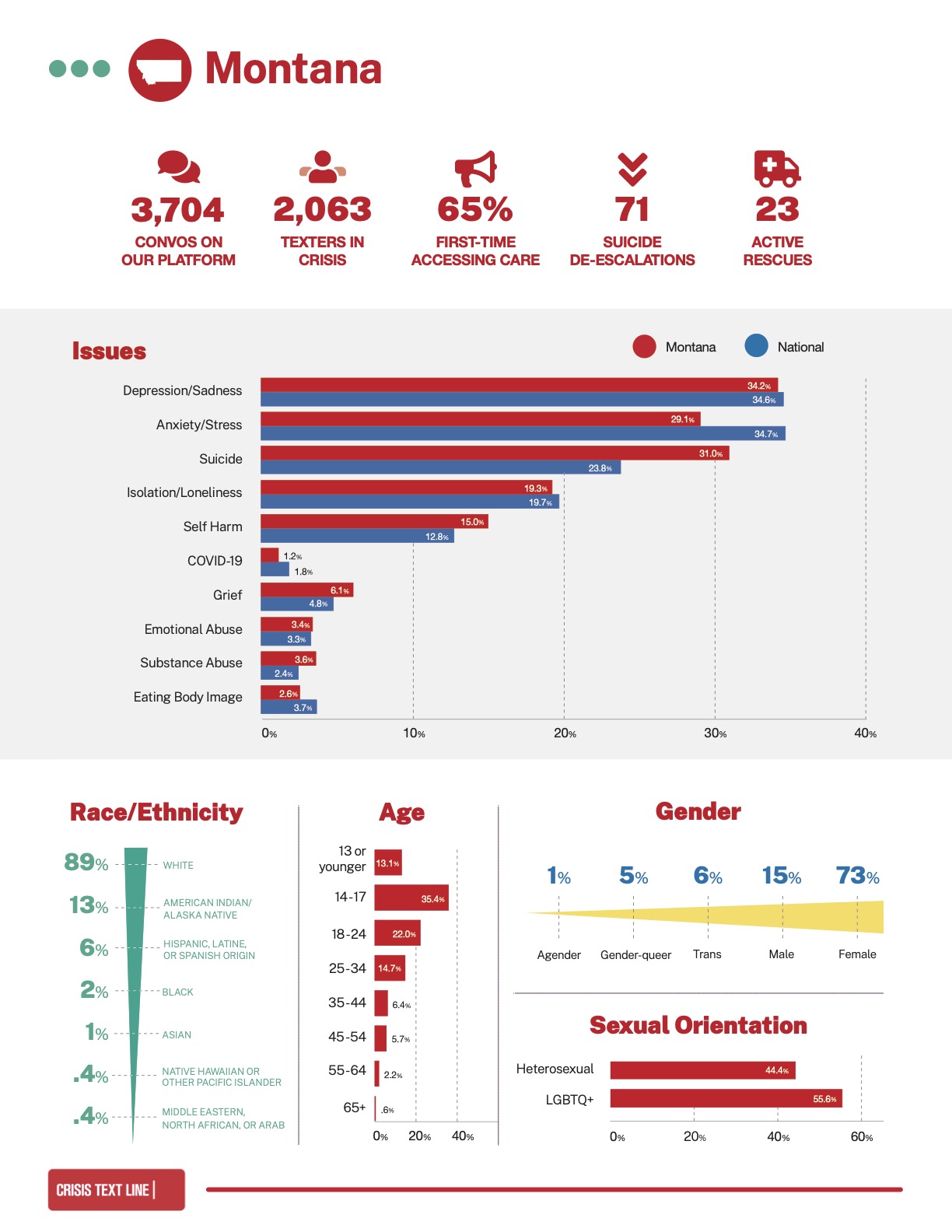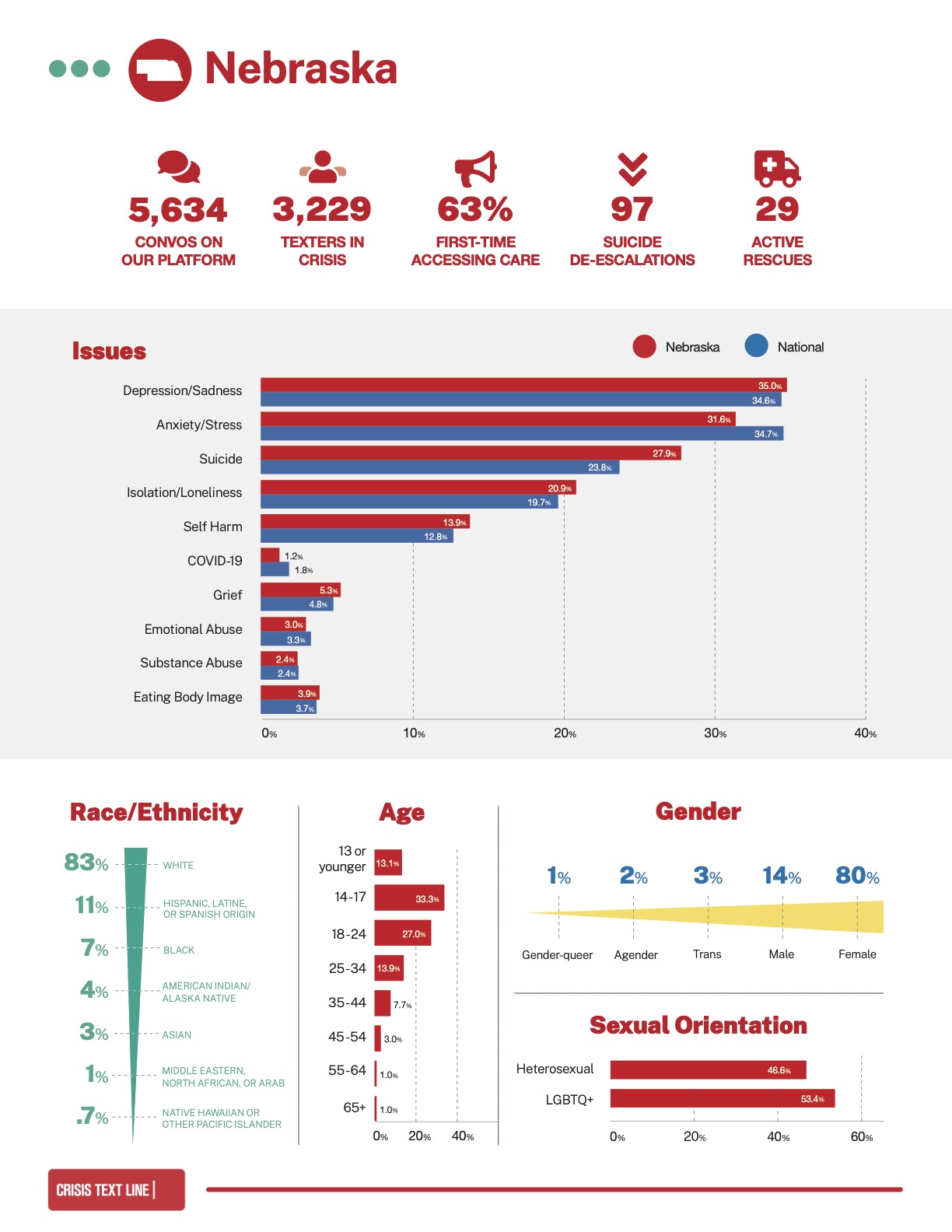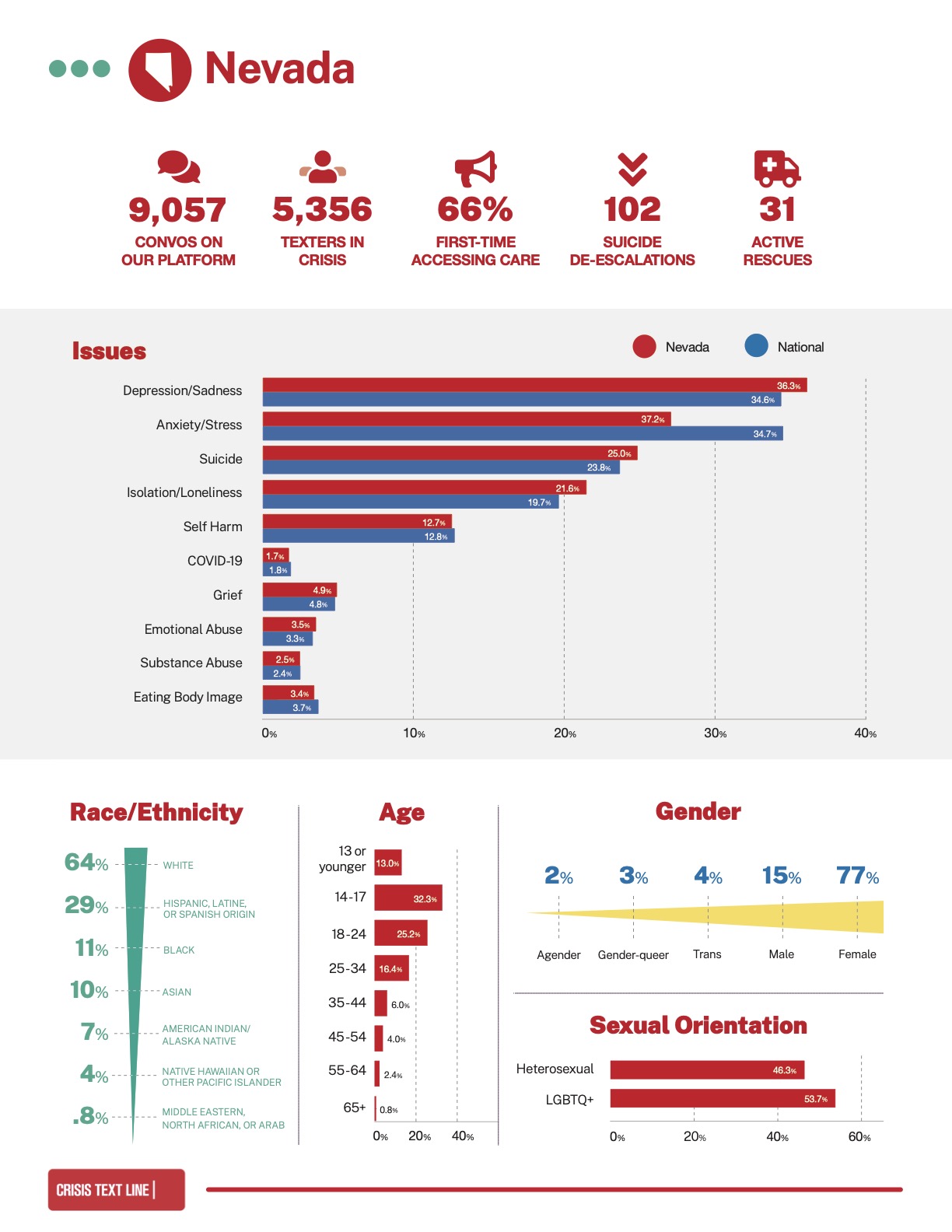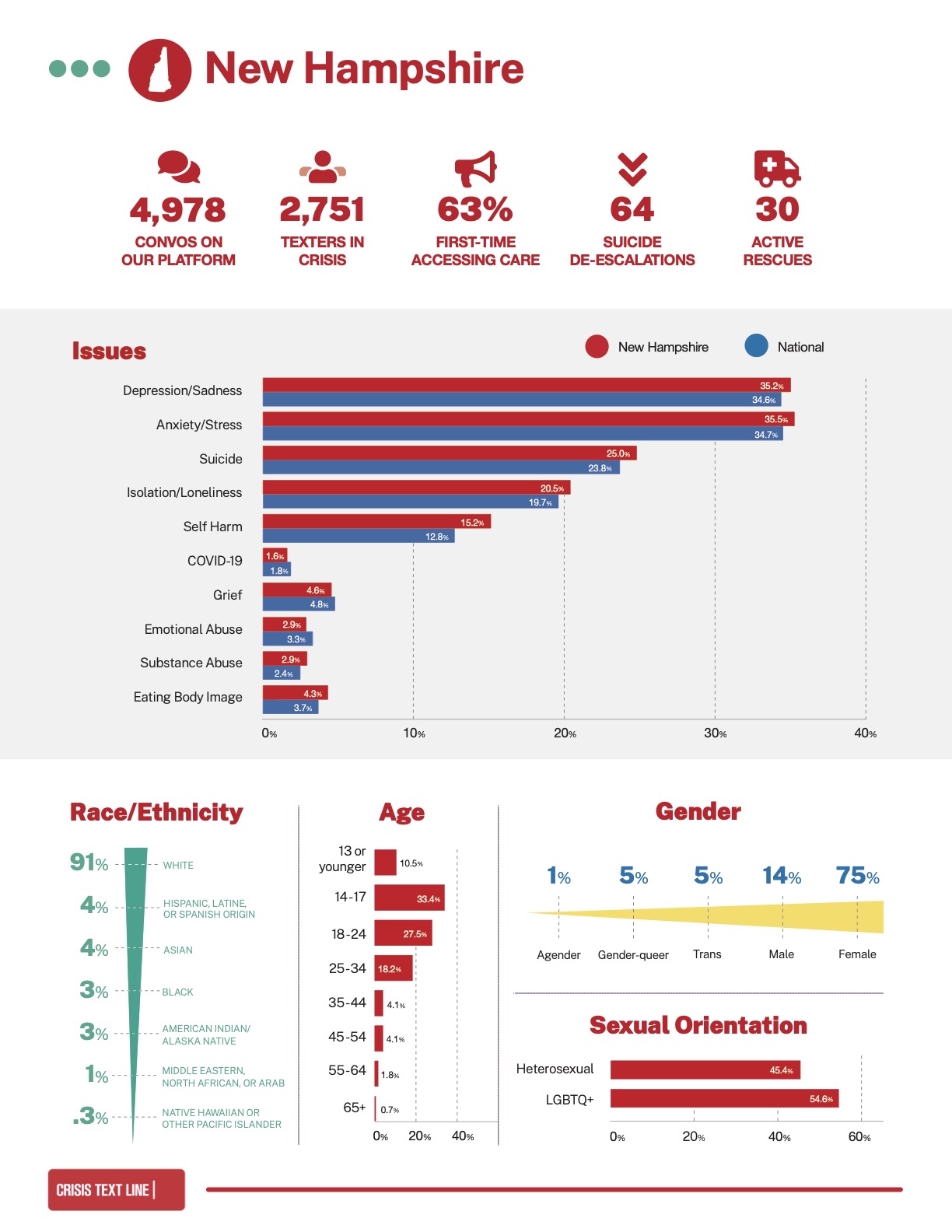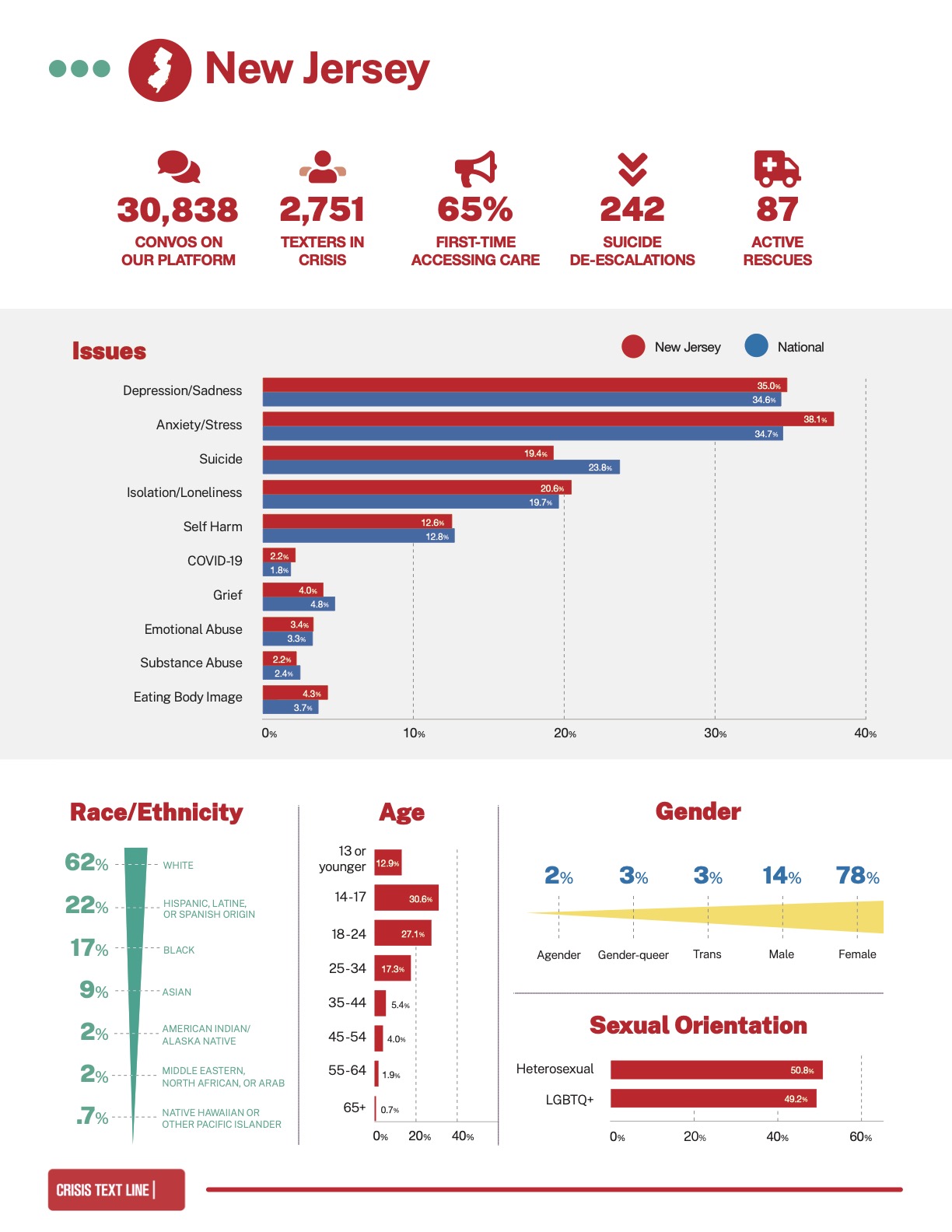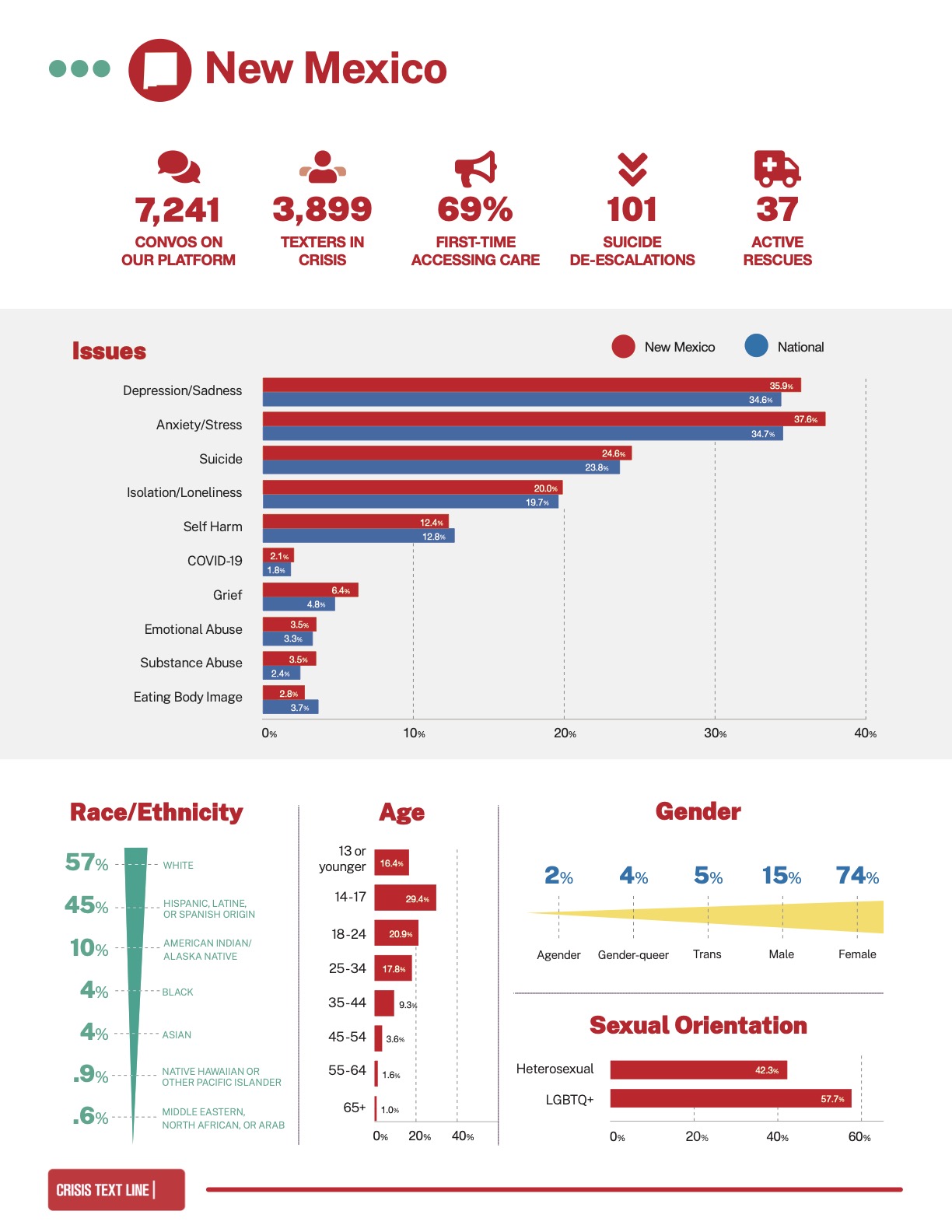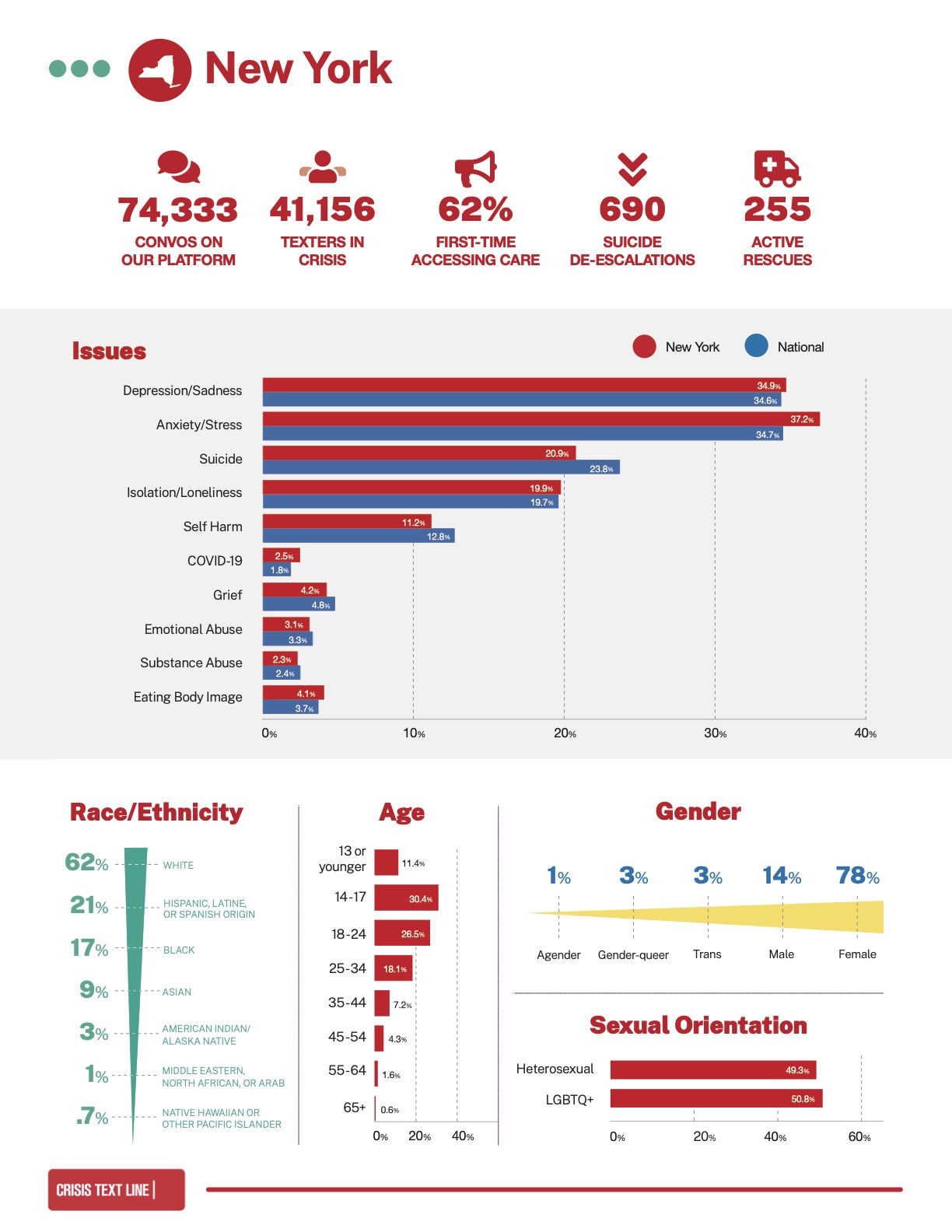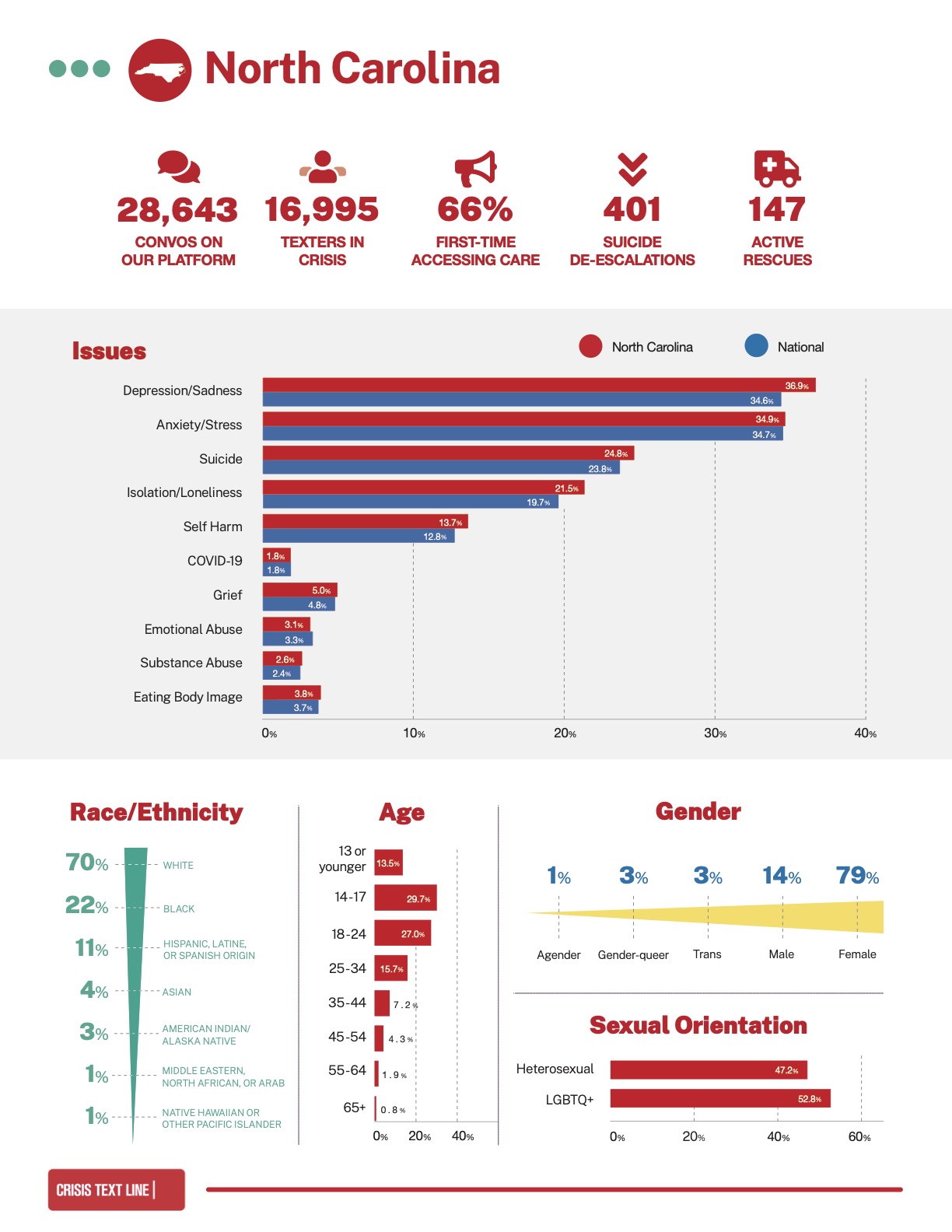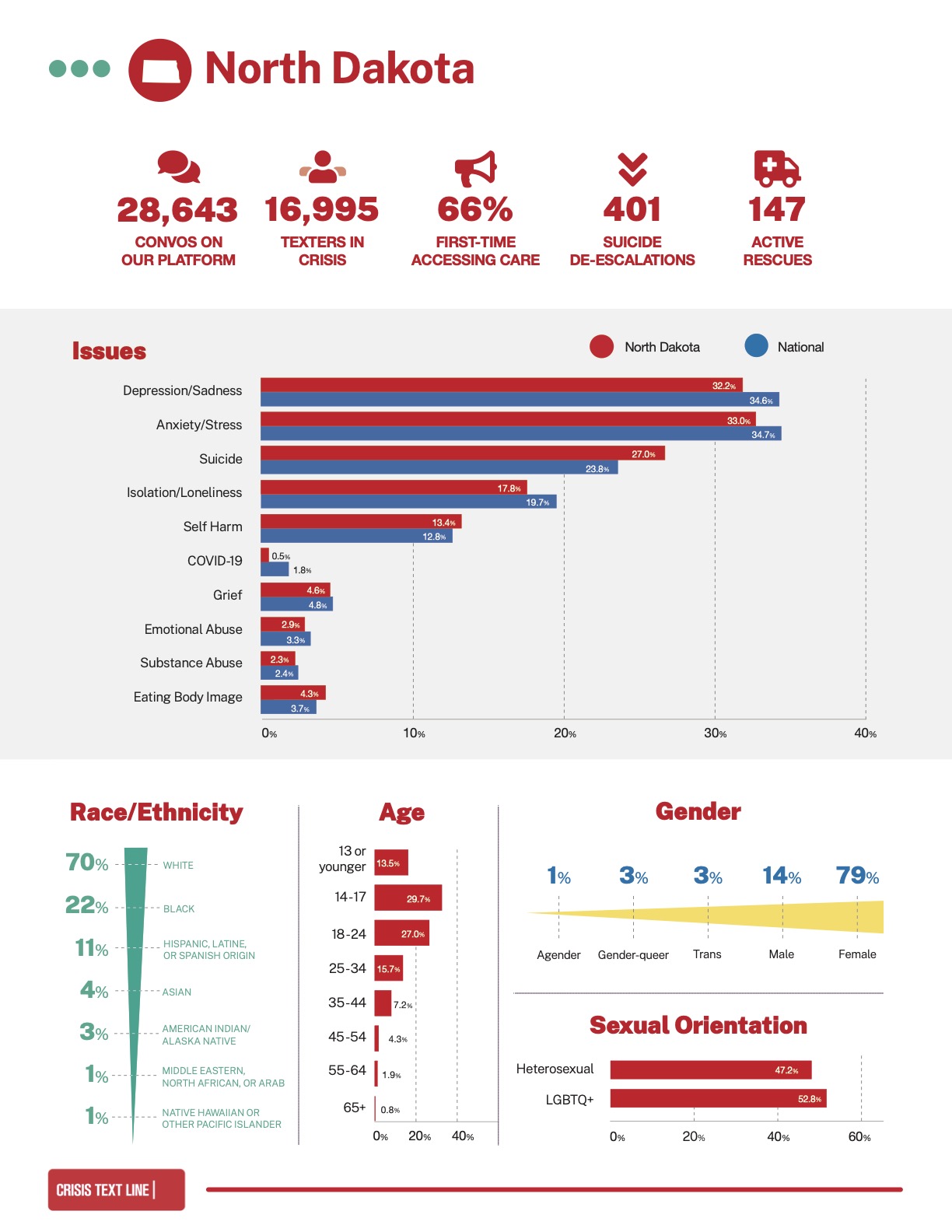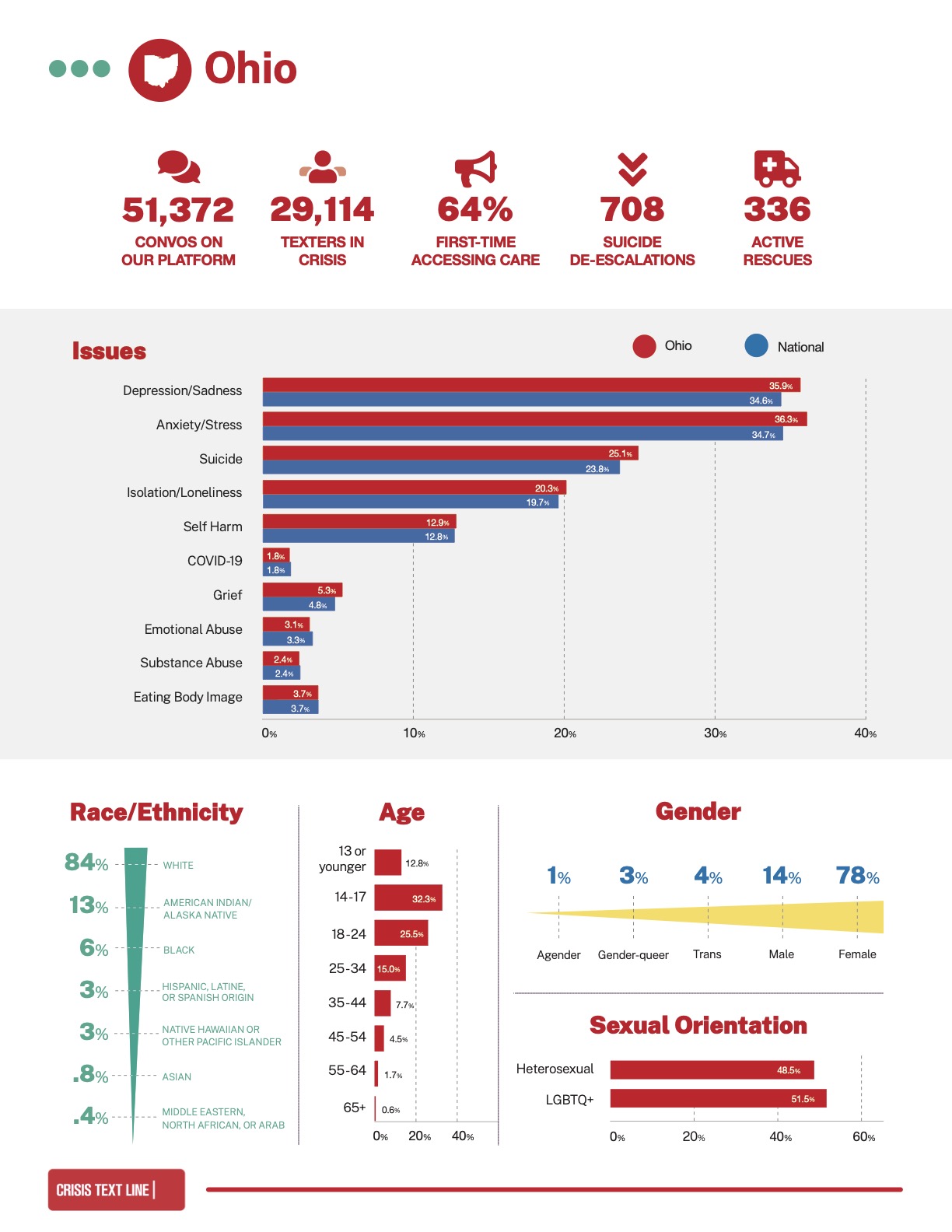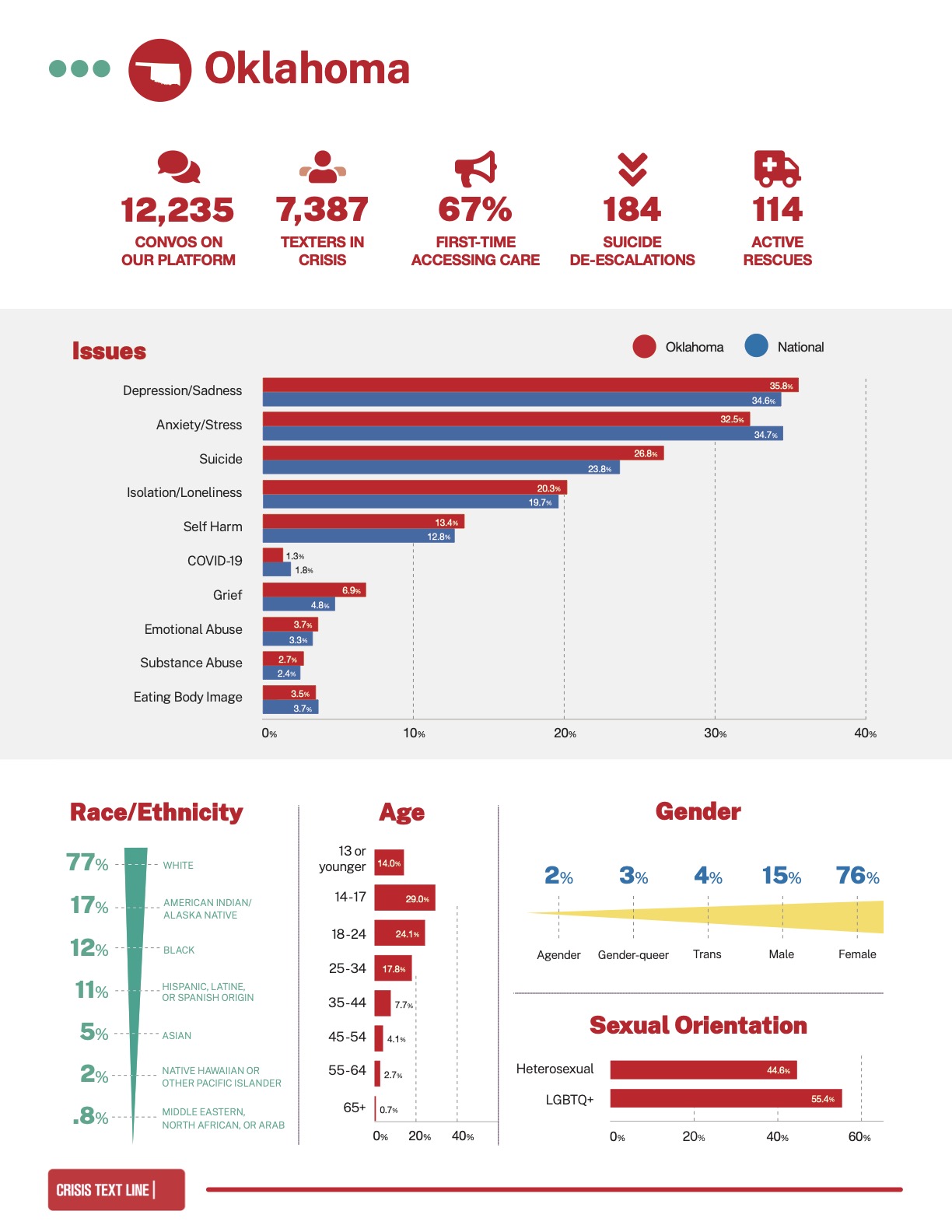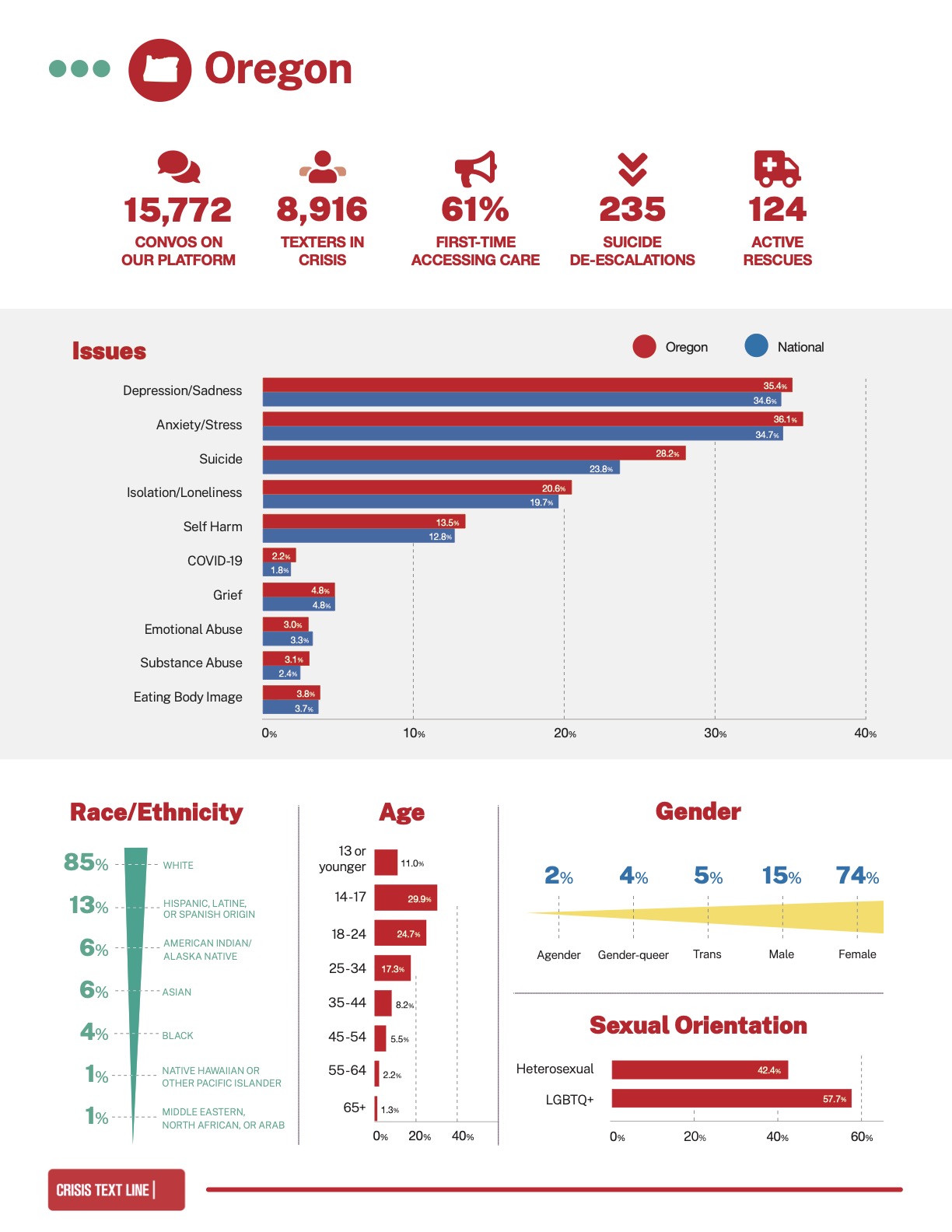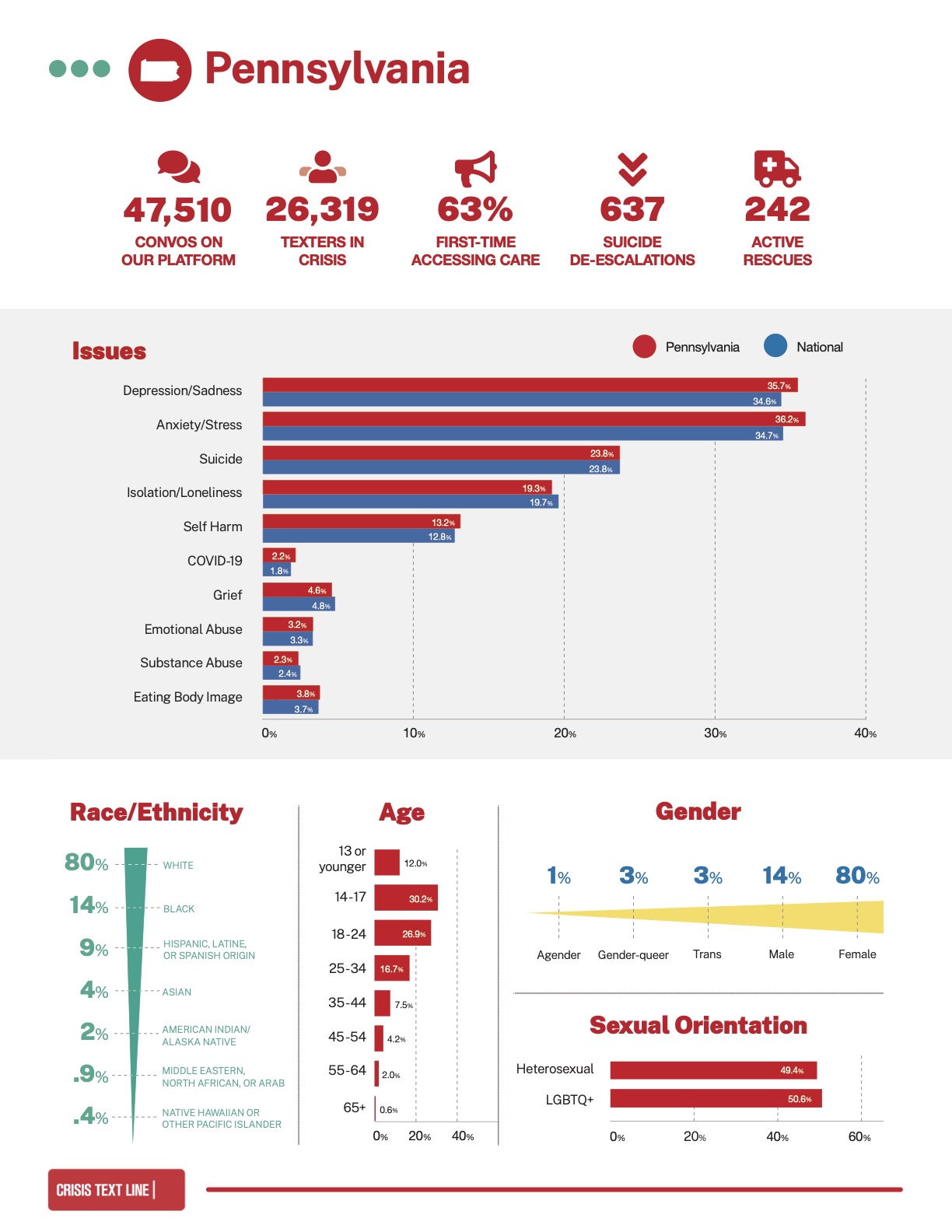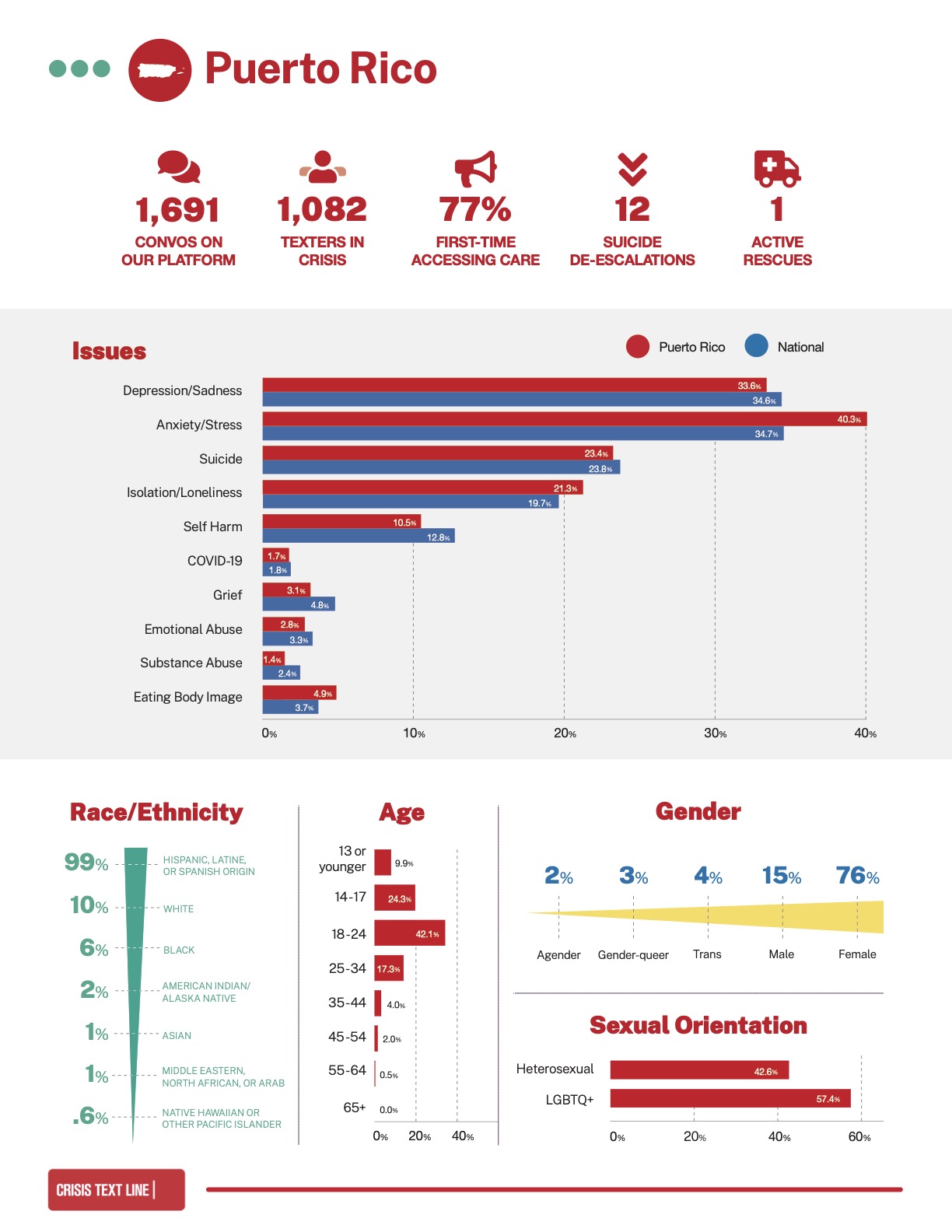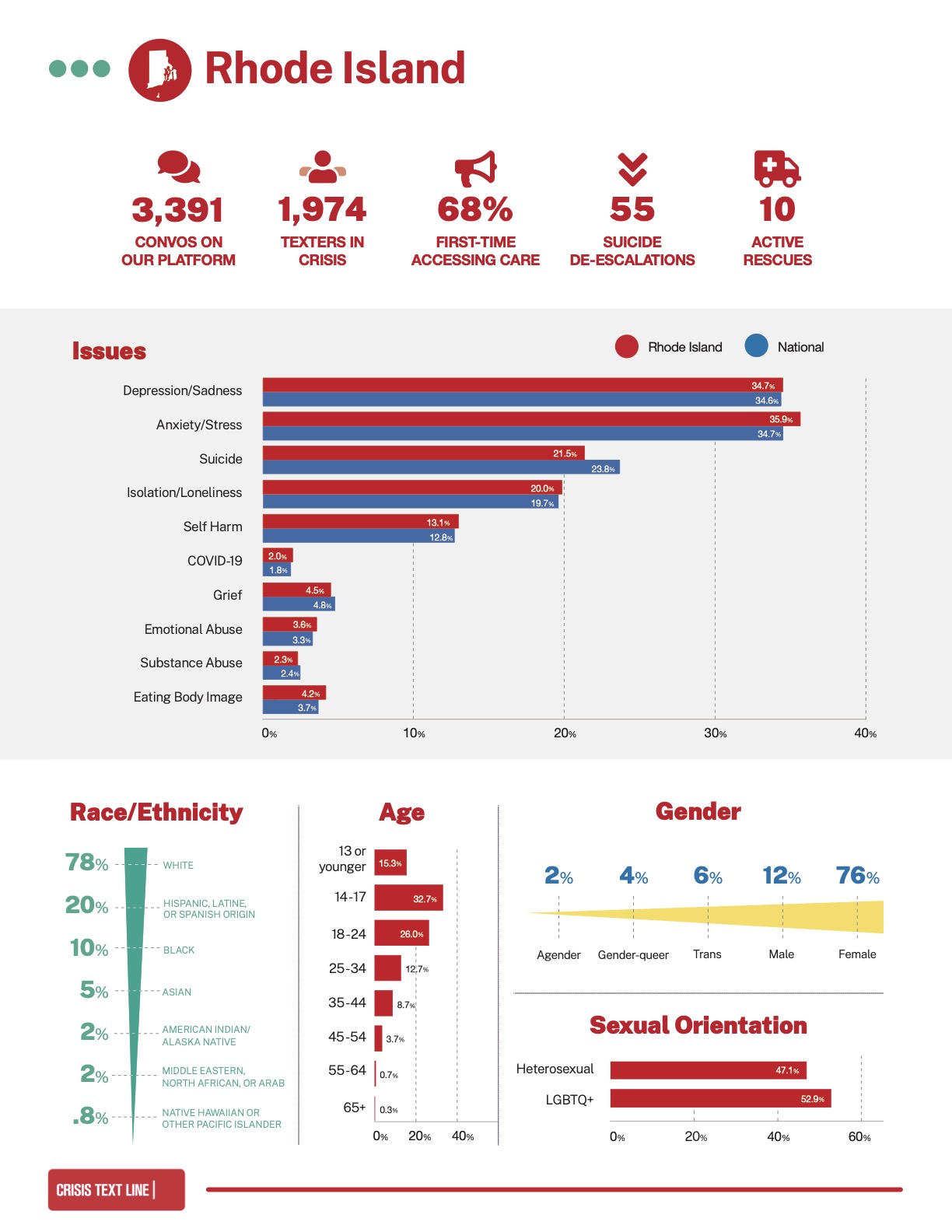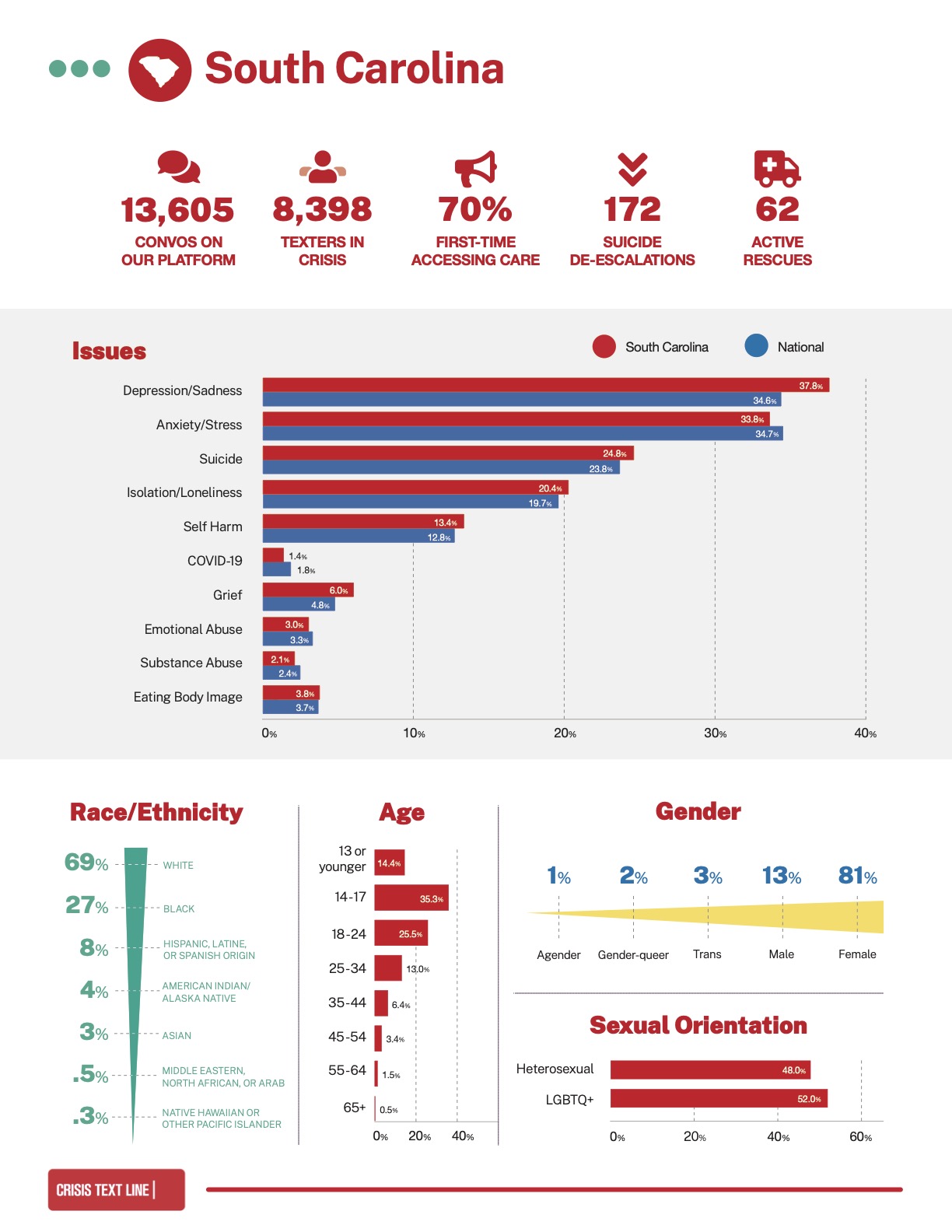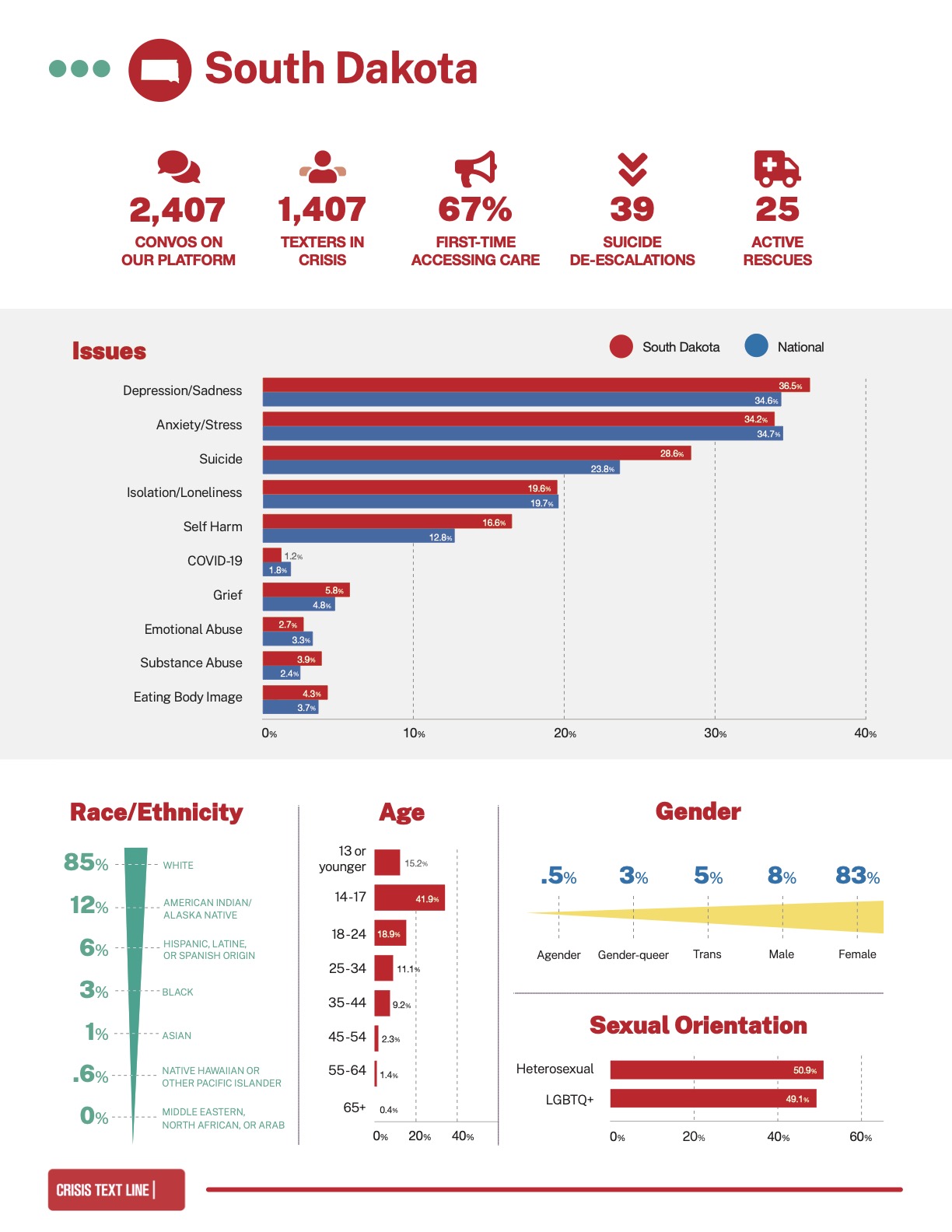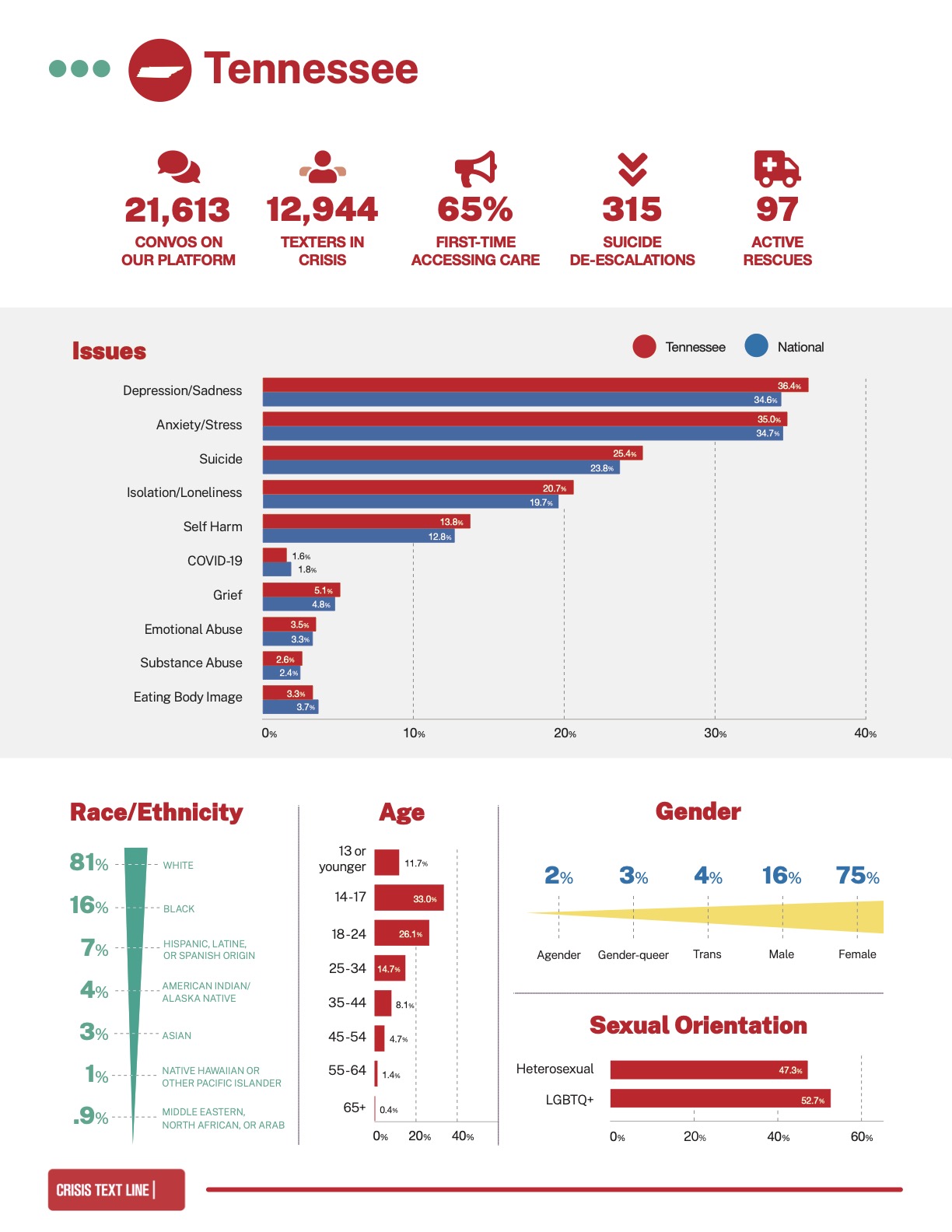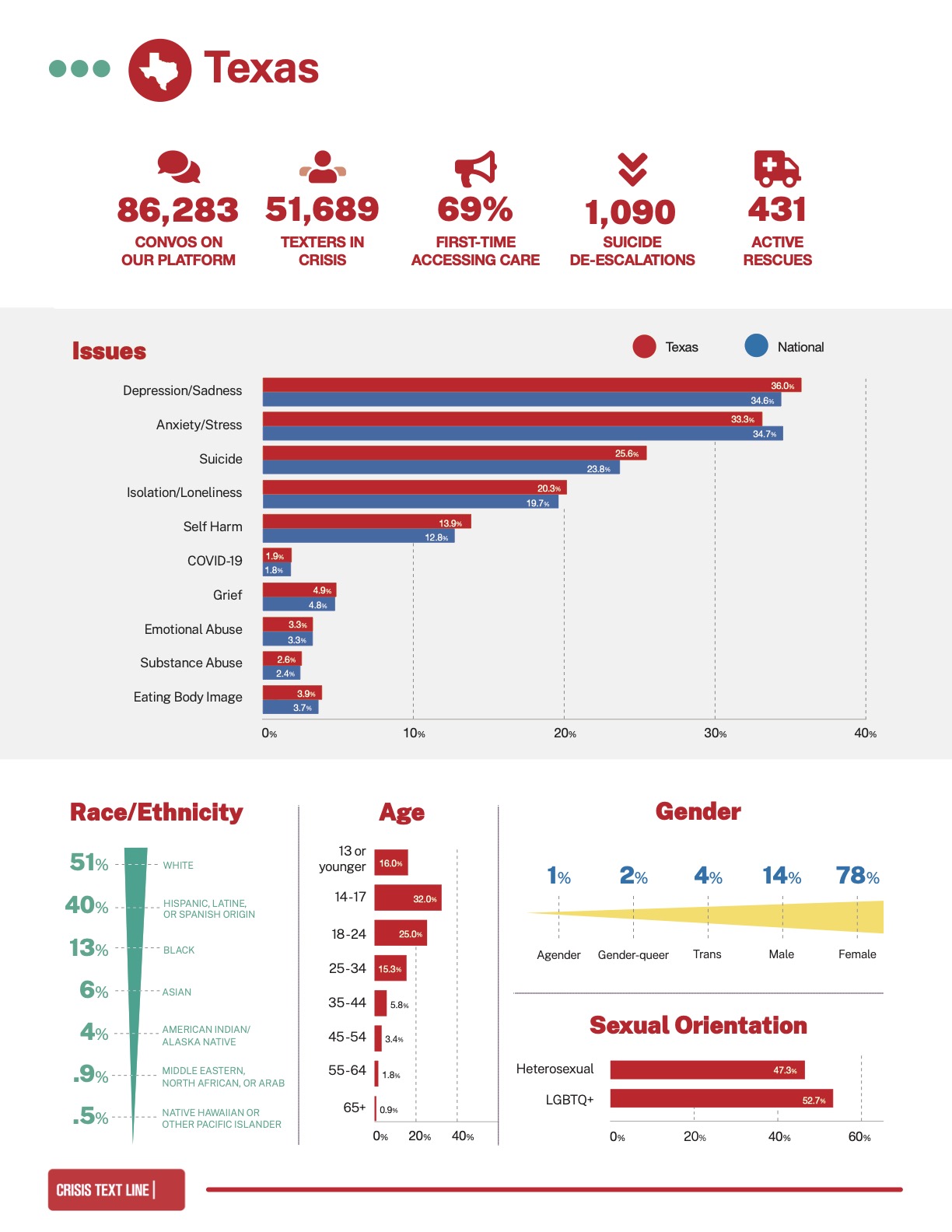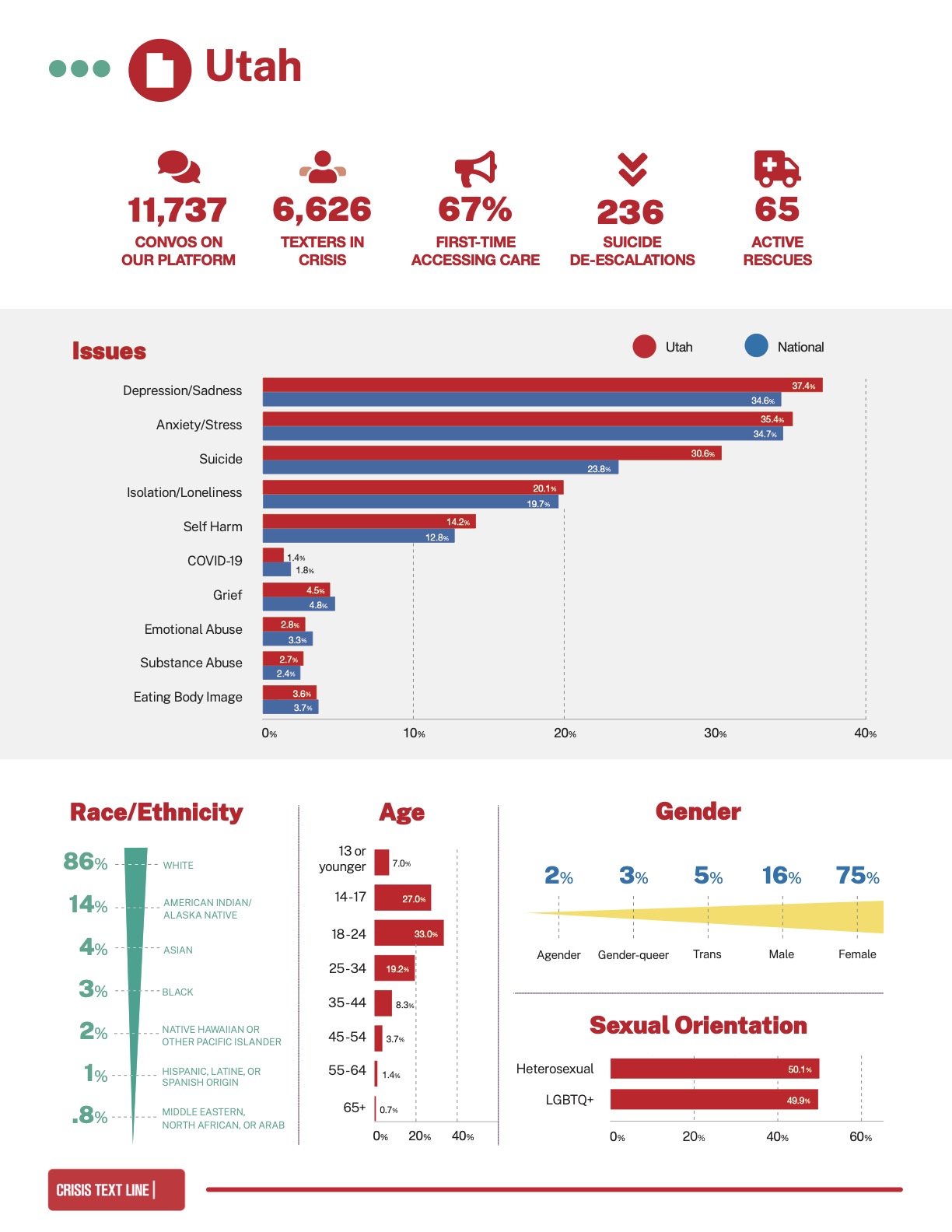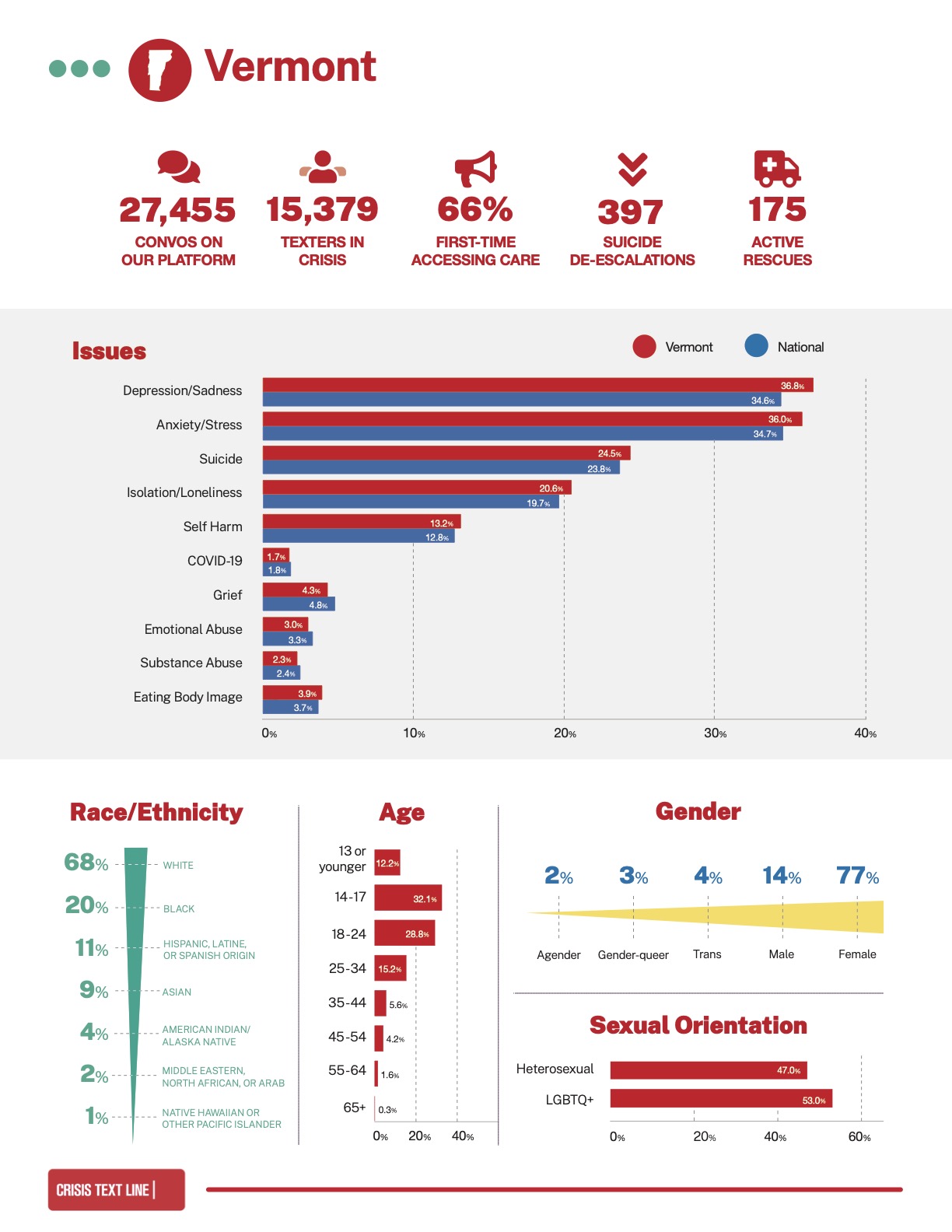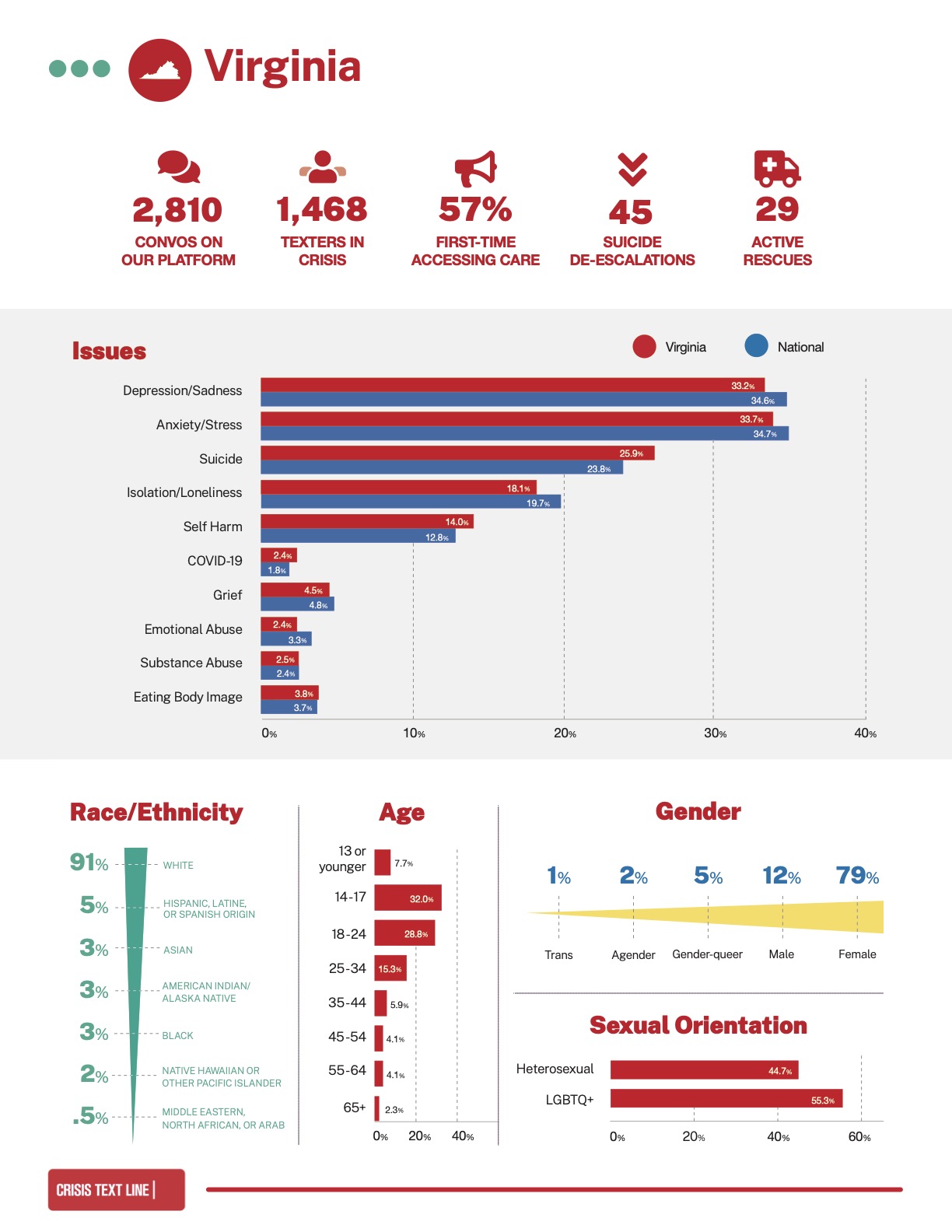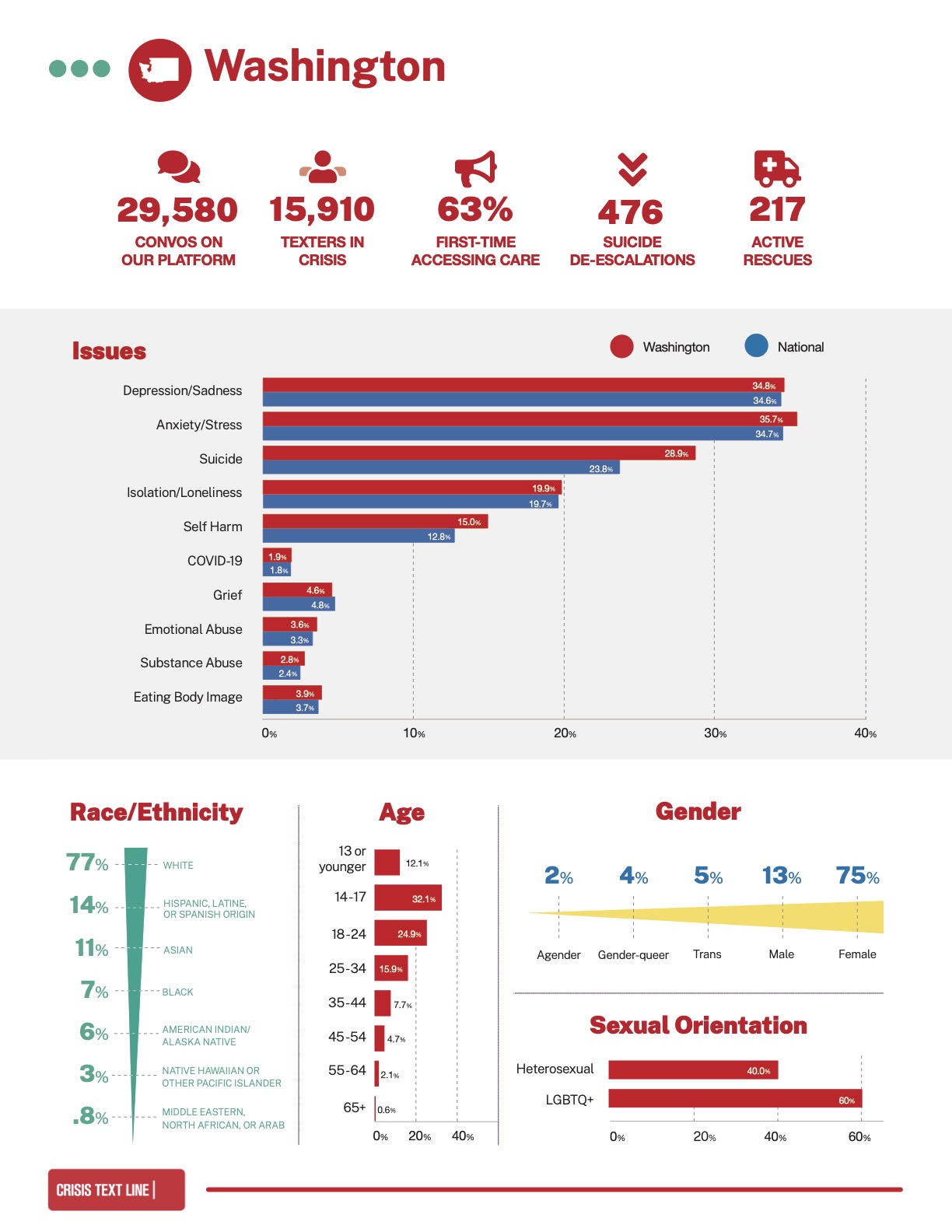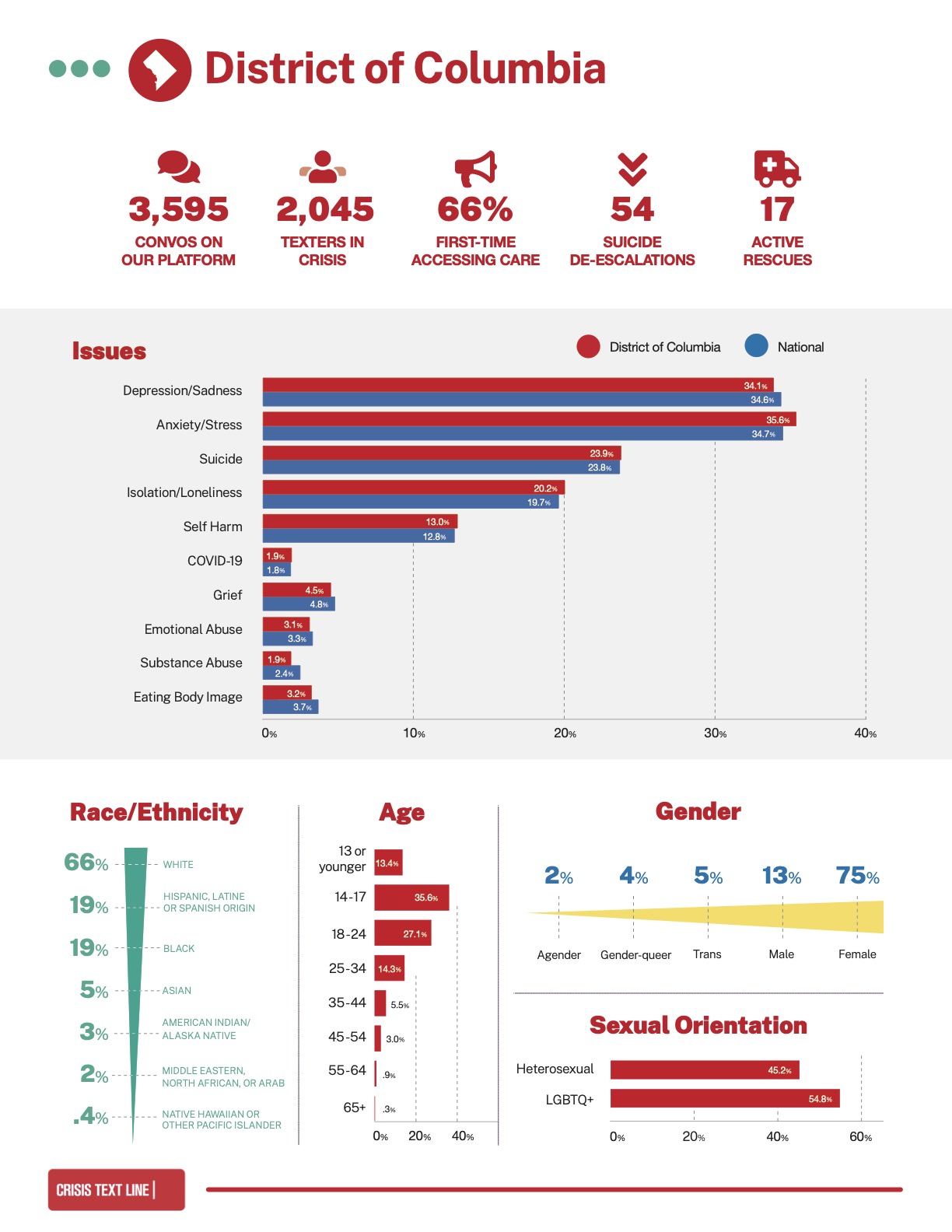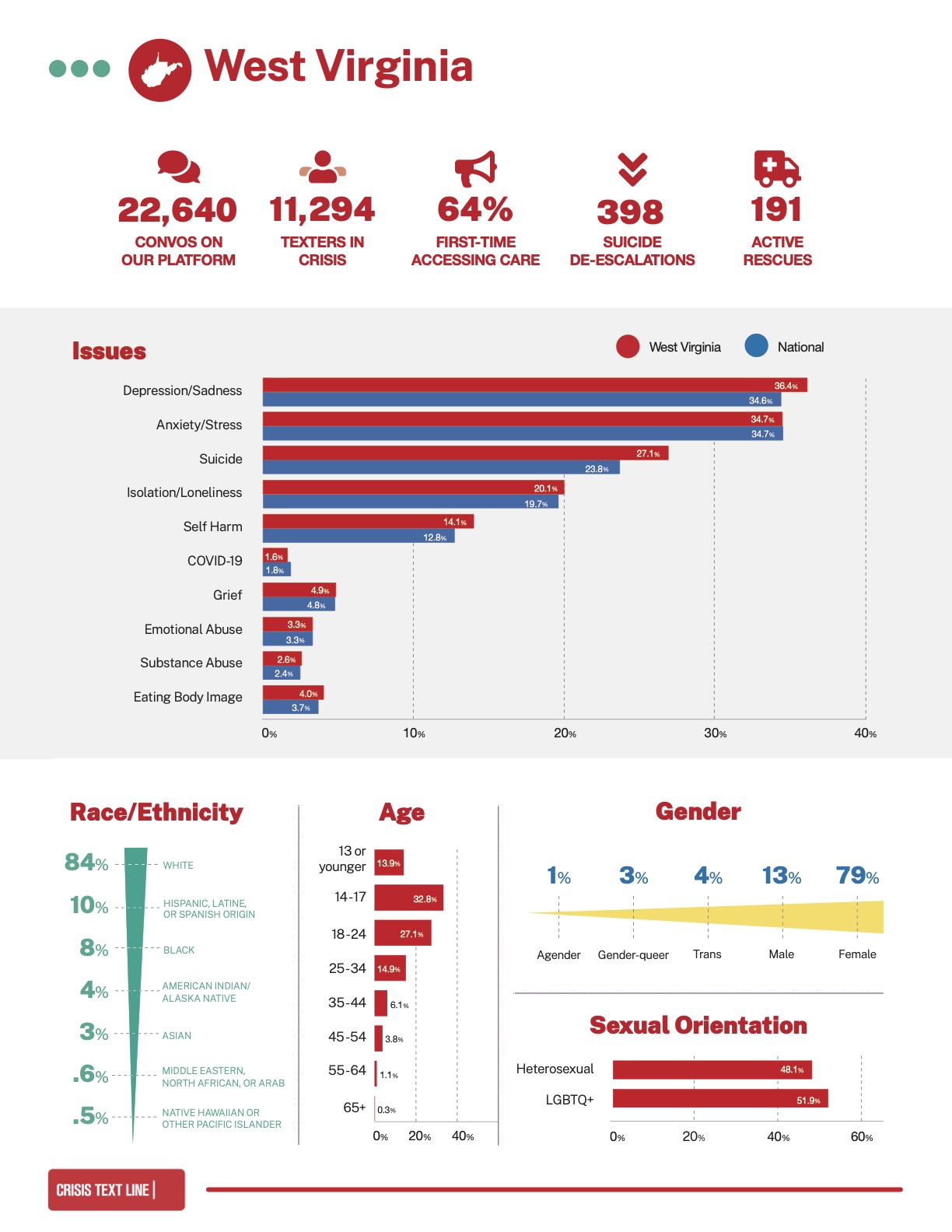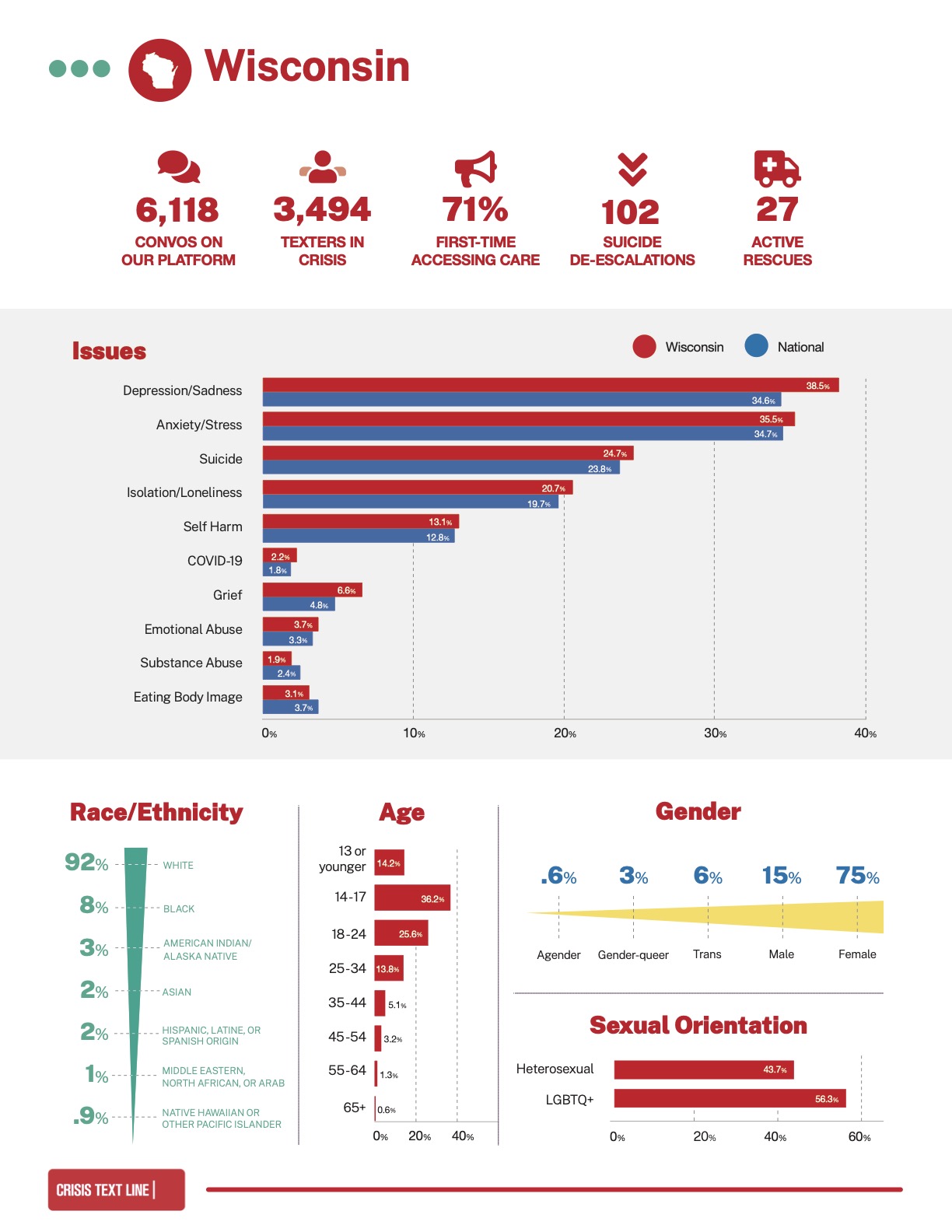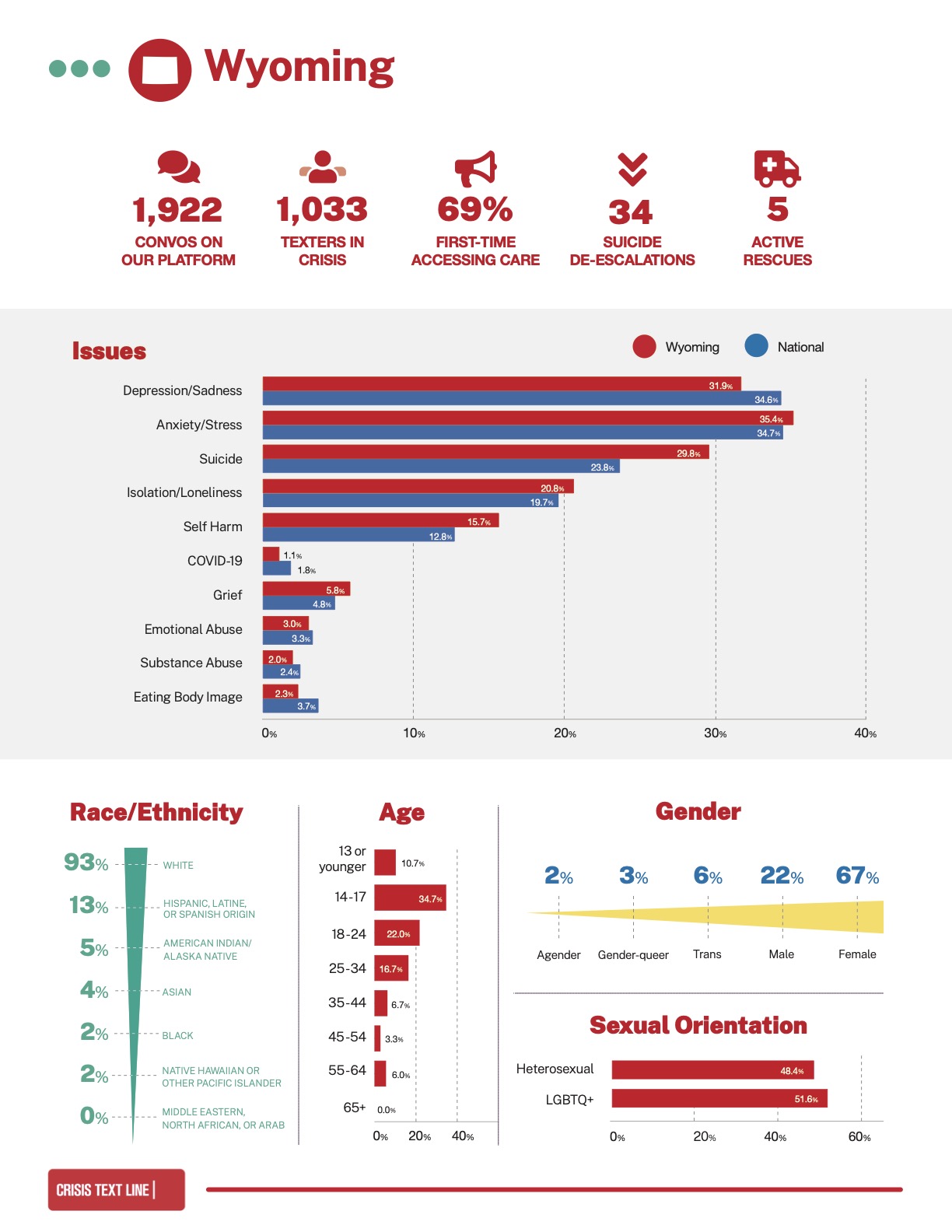United In Empathy
Stricken by grief and unable to sleep, a young teen in Oklahoma reached for their phone and punched in 741741, hoping that someone would be awake at 2 a.m. so they wouldn’t feel so alone. In California, a Latine texter typed in AYUDA (which means “help”) to connect with a Spanish-speaking volunteer Crisis Counselor who might understand why she can’t bring herself to stop inflicting pain onto her own body. Despite their differences in geography, language, and gender identity, these texters were united in their deep feelings of sadness, loneliness, and anxiety that so many Americans felt in 2021. And they were not alone.
In 2021, over 20,000 people donated their time to connect with strangers as volunteer Crisis Counselors at Crisis Text Line, a nonprofit providing free, 24/7 crisis intervention via text. Collectively, our volunteer Crisis Counselors had approximately 1.3 million conversations with people in crisis. We were confronted with a generation in pain (around 70% of our texters in 2021 were under 25), struggling with self-harm, and searching for ways to cope with surmounting grief.
From individual crisis conversations to national hospitalization rates, in 2021, it became clear: the country’s youth mental health crisis grew deeper.
Here are some highlights from our research
National Summary
Crisis Text Line had 1.3 million conversations with texters during 2021. We wanted to understand how mental health issues like anxiety, depression, and suicide shifted in 1.3 million crisis conversations in 2020.
Crisis Text Line had 1.3 million conversations with texters during 2021. We wanted to understand how mental health issues like anxiety, depression, and suicide shifted in 1.3 million crisis conversations in 2020.
Explore the trends by demographics
Explore the trends by state
Select your state below to learn about the state of mental health across the country.
Select your state below to learn about the state of mental health across the country.
About the analysis
In our analysis, we sought to understand how people in pain were coping amid a mental health crisis and how this crisis uniquely impacted America’s youth.
This analysis was conducted by Crisis Text Line’s own Research team utilizing anonymized and de-identified information gathered in 2021. The foundation for this analysis was information from three primary sources:
- Conversation Data. Insights from conversation helped us explore the language of crisis in 2021, as well as the top coping mechanisms that texters found in collaboration with volunteer Crisis Counselors.
- Volunteer Crisis Counselor generated Data. Volunteer Crisis Counselors tag most conversations for key topics discussed, such as depression, self harm, eating disorders and body image issues. They also screen texters for suicidal risk using a ladder-up risk assessment. This information helped us determine which issues increased or decreased in our conversations with texters in 2021.
- Optional post-conversation survey Data. After each conversation, we ask texters to complete a voluntary survey on demographic information, satisfaction, and some other measures that help us better serve our users. About 21% of texters complete this survey, which allows us to explore trends in the demographic backgrounds of our texters who respond to this survey.
Crisis Text Line texters are not reprepresenative of the population of the United States. Our texters tend to be younger than the average American age. Our goal is to serve anyone who comes to us; it is not to pursue a representative sample. However, in combination with other data sources, we have a unique perspective to contribute to the field of mental health.

